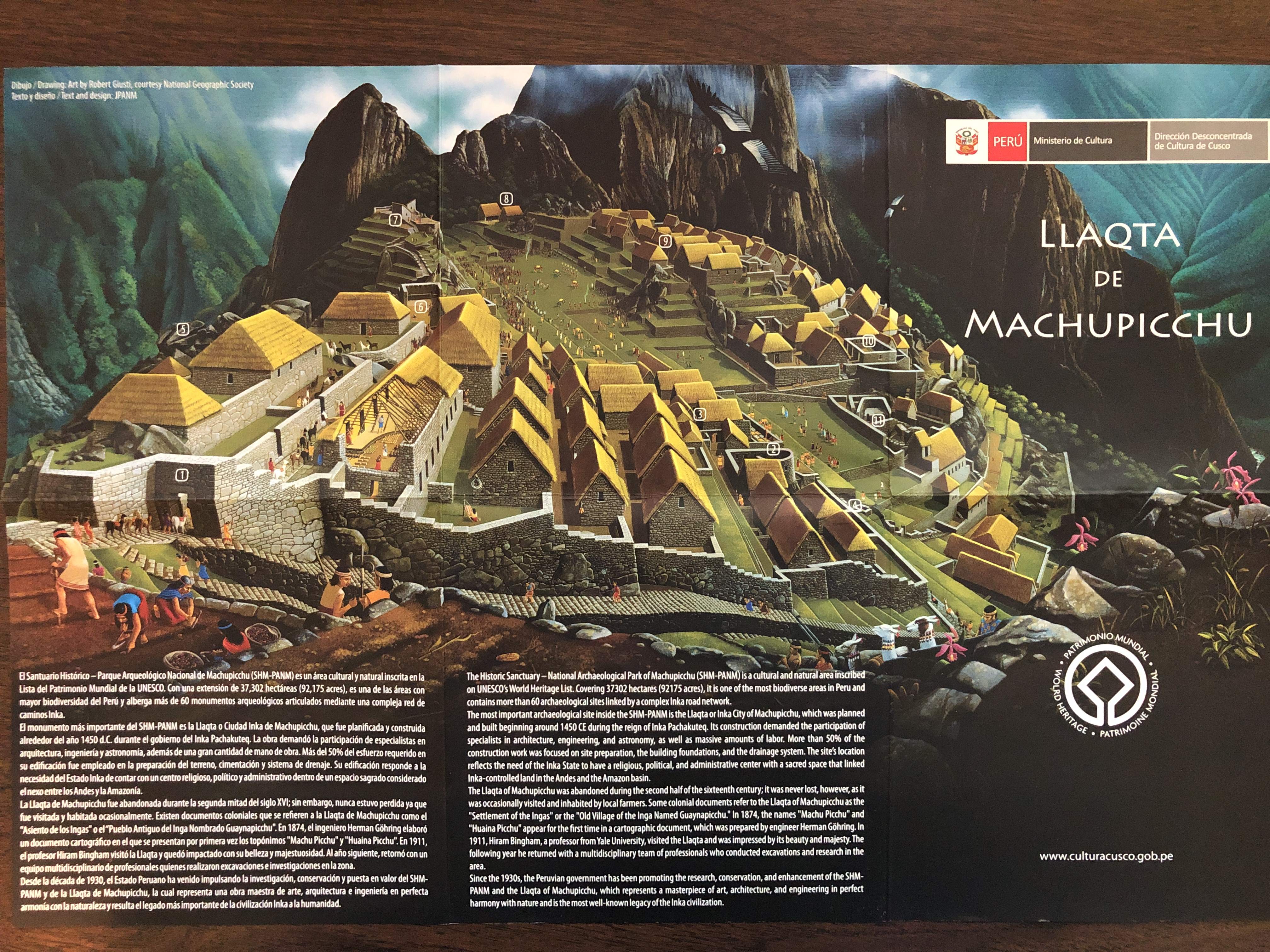We signed up for a tour of Peru and Ecuador with OAT (Overseas Adventure Travel). We flew into Lima on August 31. We were watching Hurricane Dorian approach Florida as our flight went through Miami. At the end of our trip on September 17 we left Quito Ecuador, arriving home on the 18th. This section covers the Peru part of the trip. We flew into Peru a day early planning to do some exploration of Lima but the morning we left Houston Emerson somehow twisted his right knee walking through the house. We spent a big part of our free first day icing his knee which improved it a lot but it was somewhat bothersome the whole trip. This was a new problem not something that had occured in the past.
Our flight got in somewhere around 11PM. We hired a car from a kiosk in the airport for about $20. It took about an hour to get to our hotel in the Miraflores district of Lima. It was a nice car and the driver knew the route well but it was a wild ride with a lot more twists and turns then would be indicated by a google map search and a lot of hard breaking and lane changing through traffic.
Most of the following pictures were taken by Linda and Emerson but a few were from our fellow travelers.
We go for a short walk to John F. Kennedy park on our first day.
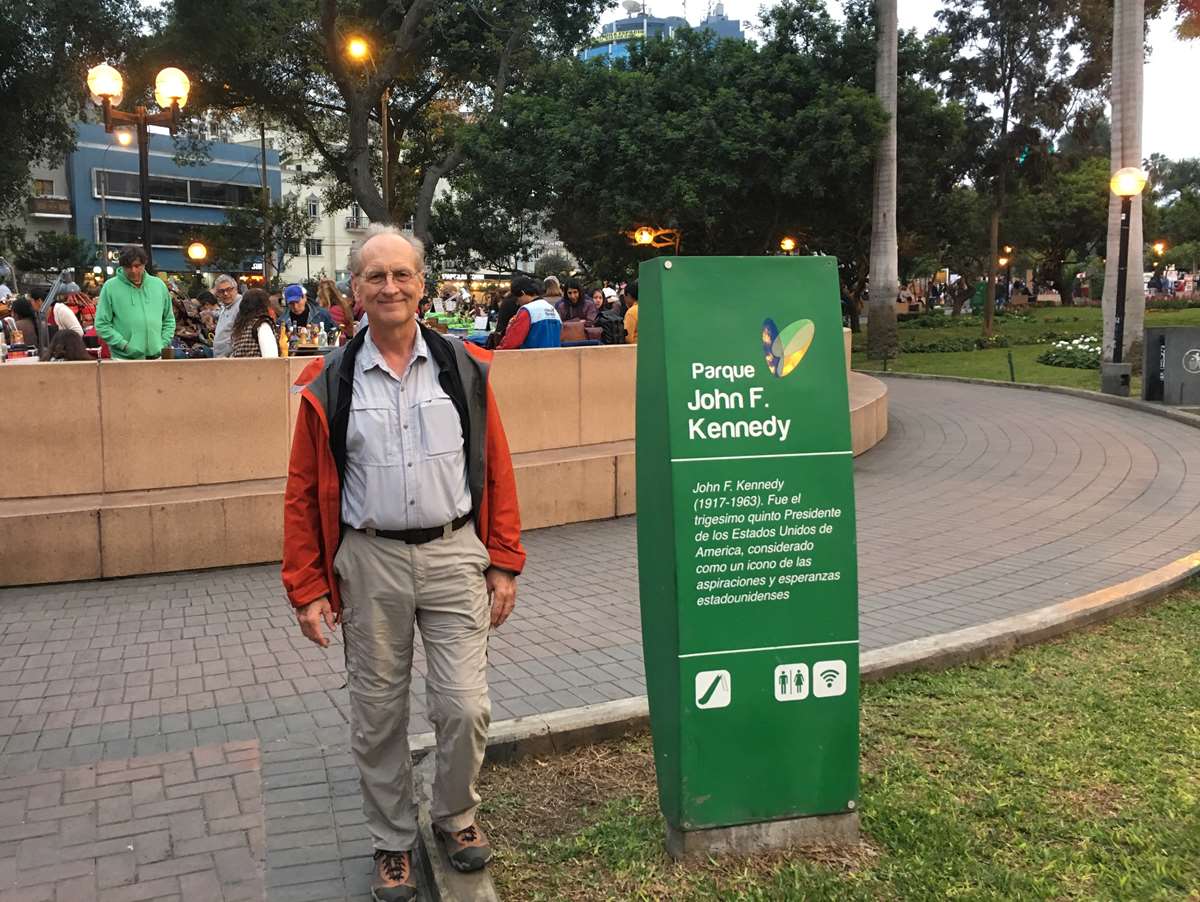
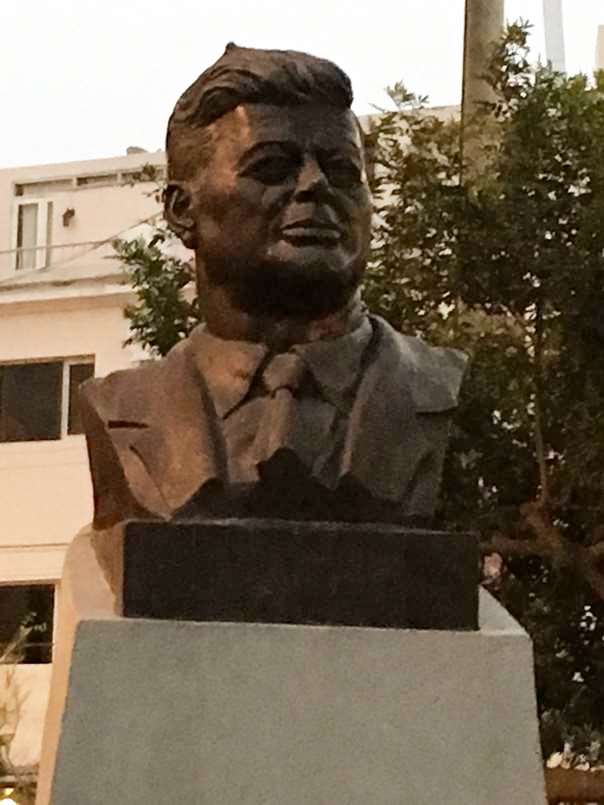
Our first tourist shop. Lots of Llamas.
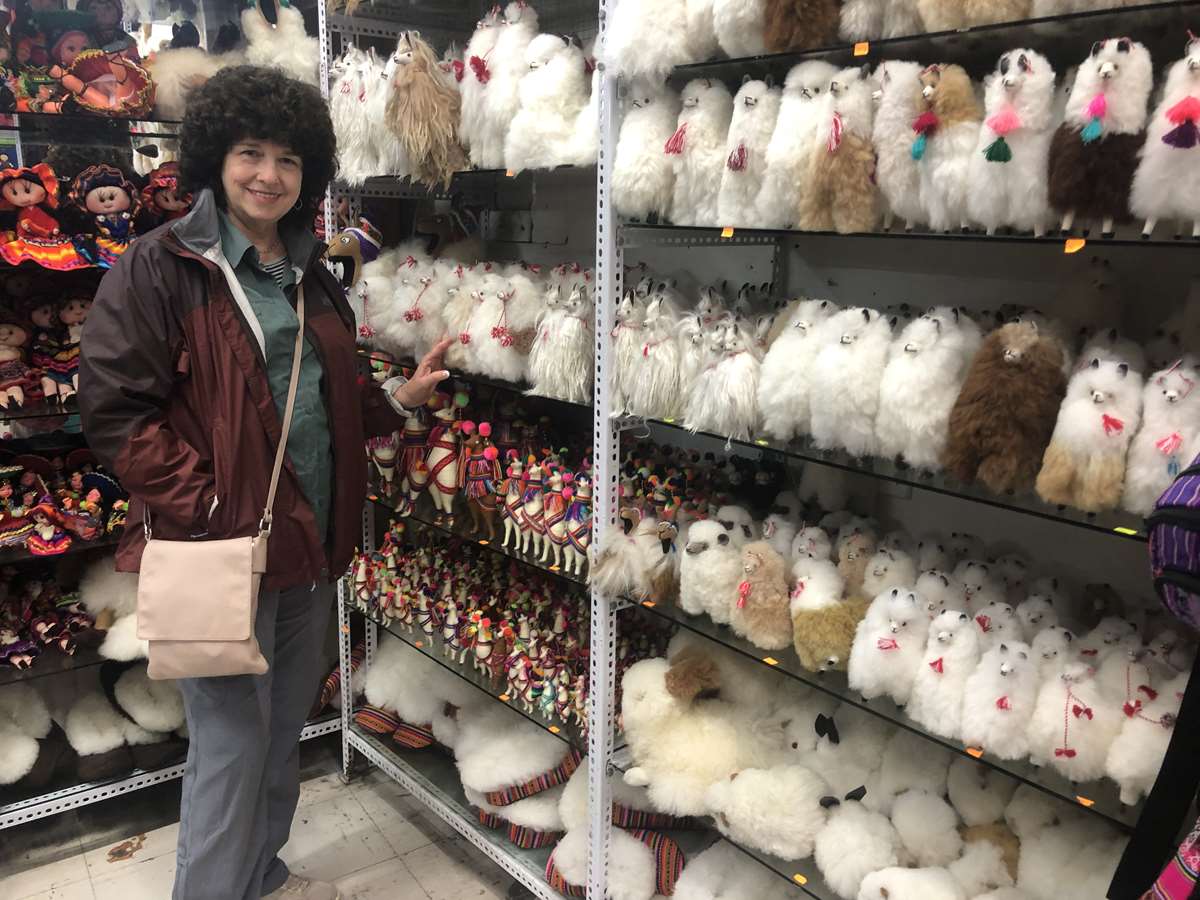
A large group of people were dancing inside of a small theater in the park.

When we got close to the park we noticed lots of cats on buildings and trees. We soon learned the park is a cat sanctuary.
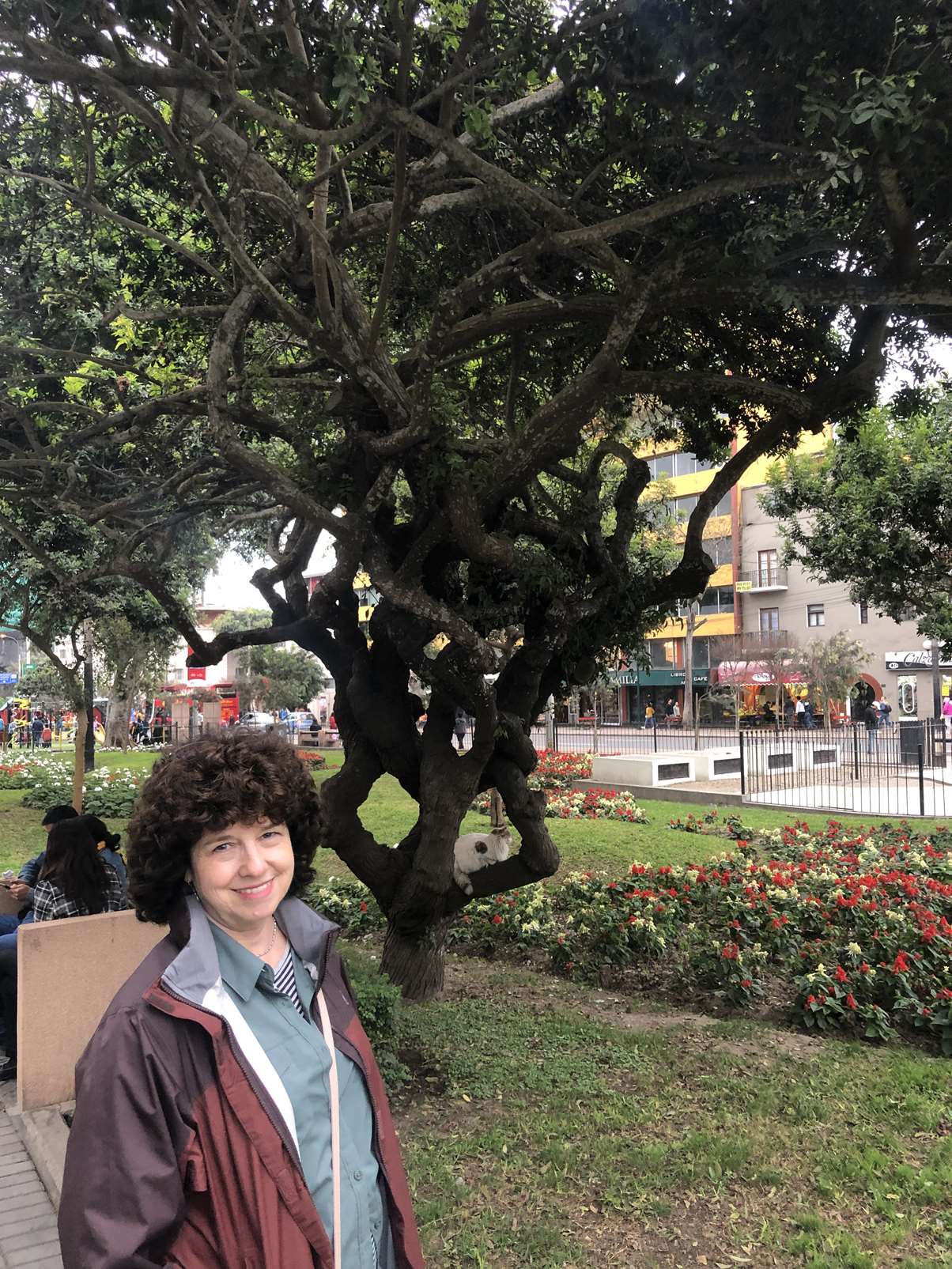
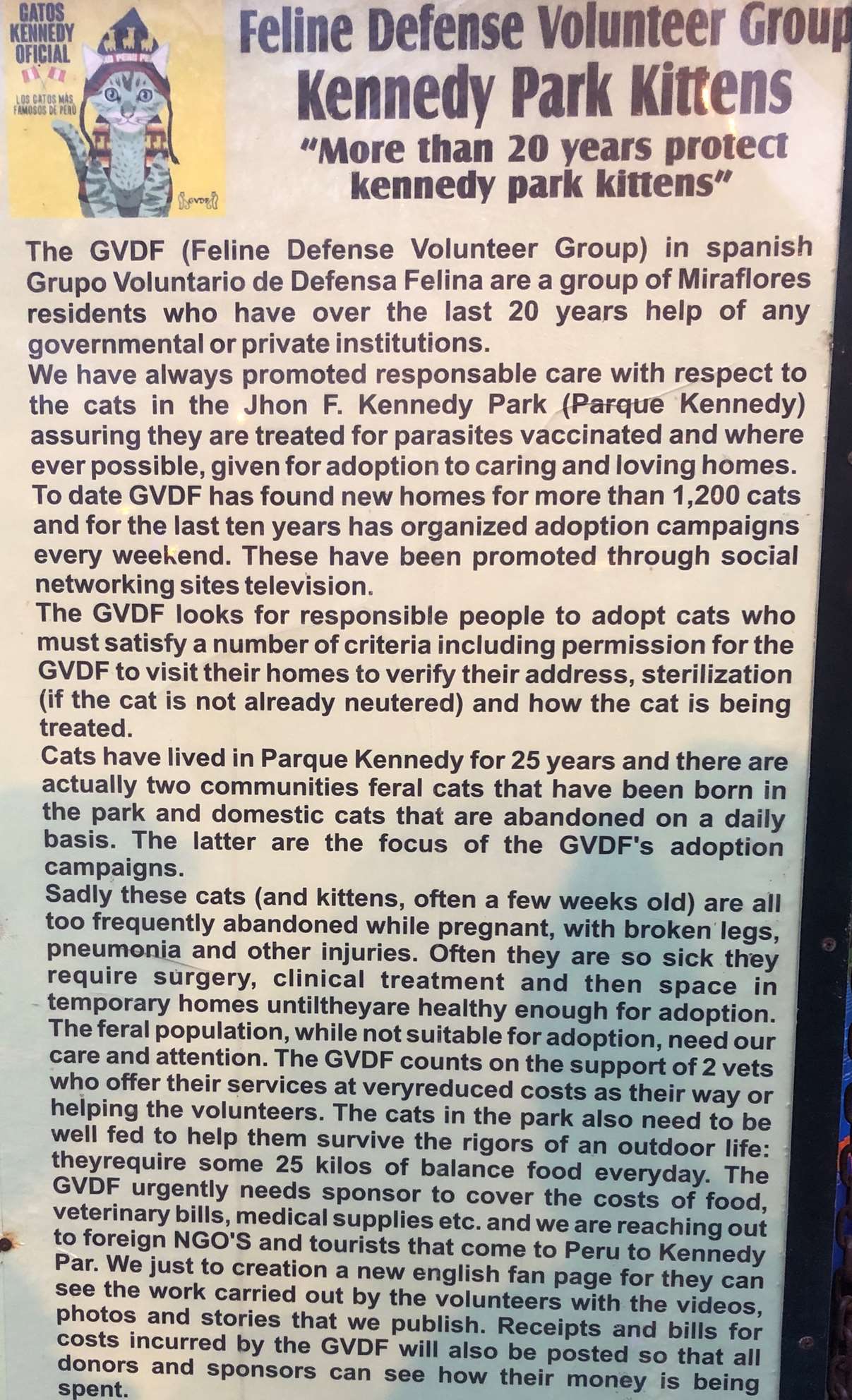
On Monday we meet our Peruvian trip leader Bel Aparicio and the rest of our group.
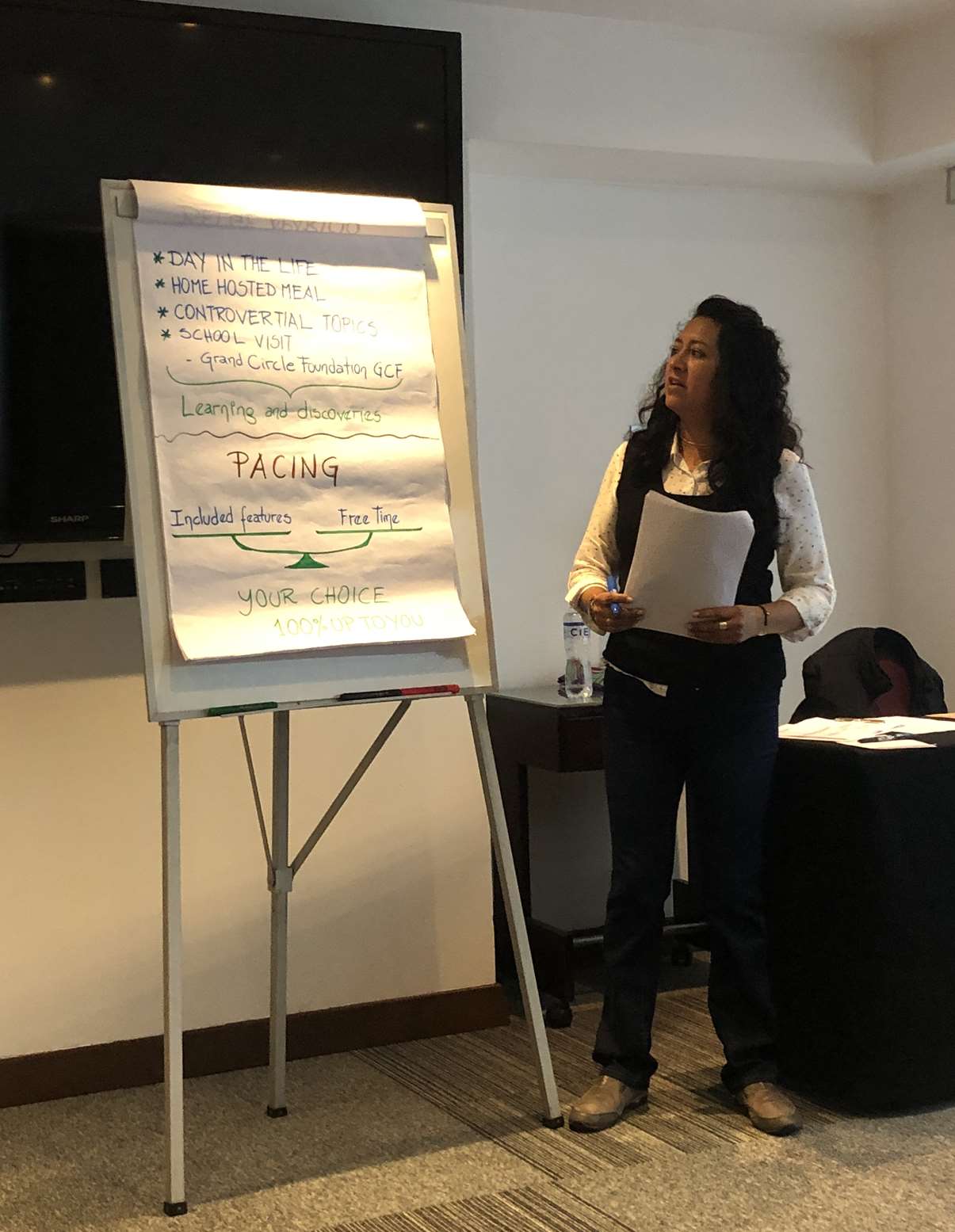
Our group's first luncheon at Cafe de la Paz next to Kennedy park.
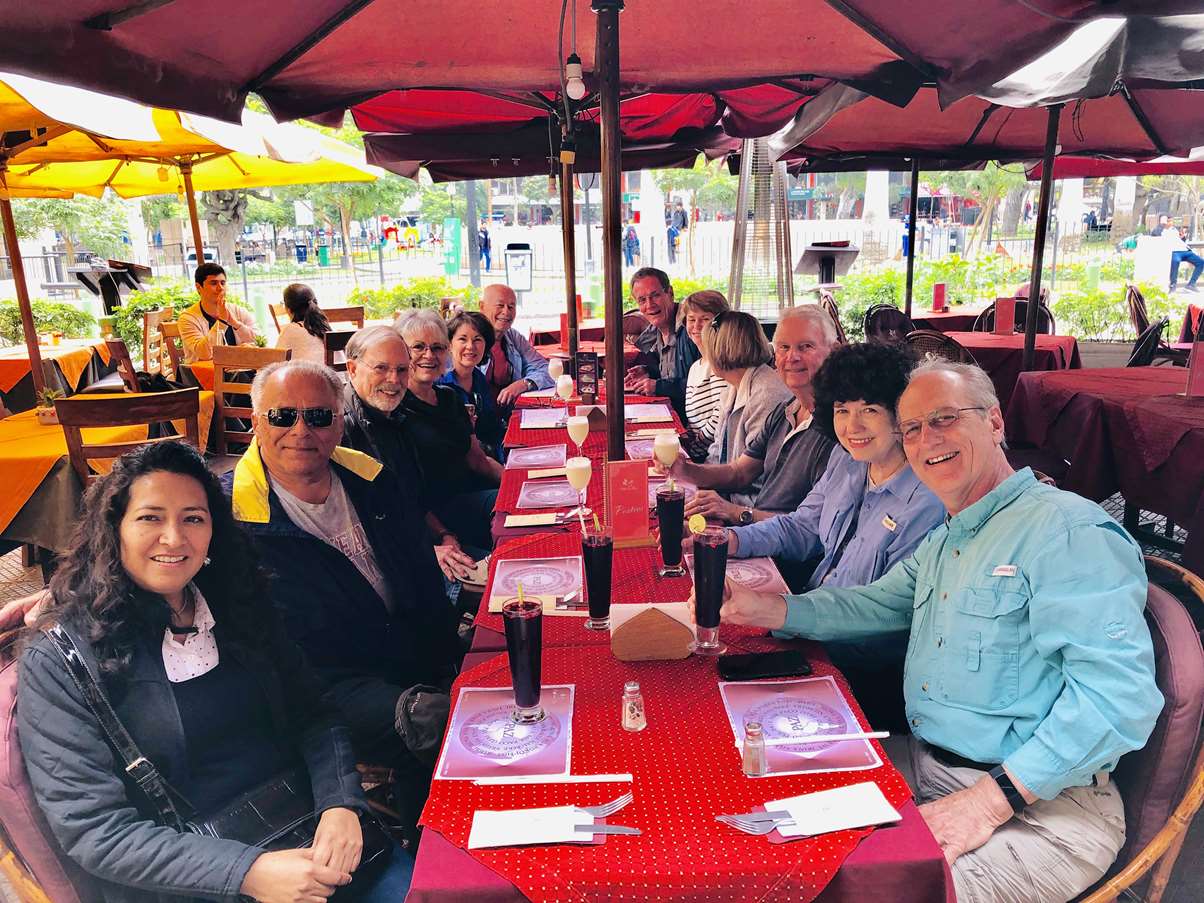
One important thing Bel let us know is that the ATM machines dispense money in both Peruvian Soles and US Dollars and they seem to both be equally accepted by the local merchants. Outside of the ATM's there are also offically sponsored people that will do a manual money exchange.
Bel introduced us to a small family who had left Venezuela, first to Brazil but they do not speak Portugeze and then to Peru where they were struggling to make ends meet. In Venezuela they had lived a middle class life. They were selling coca candy to try and make some money. We made a donation in exchange for several candy packets.

Two views along the Pacific coast in the Miraflores district.
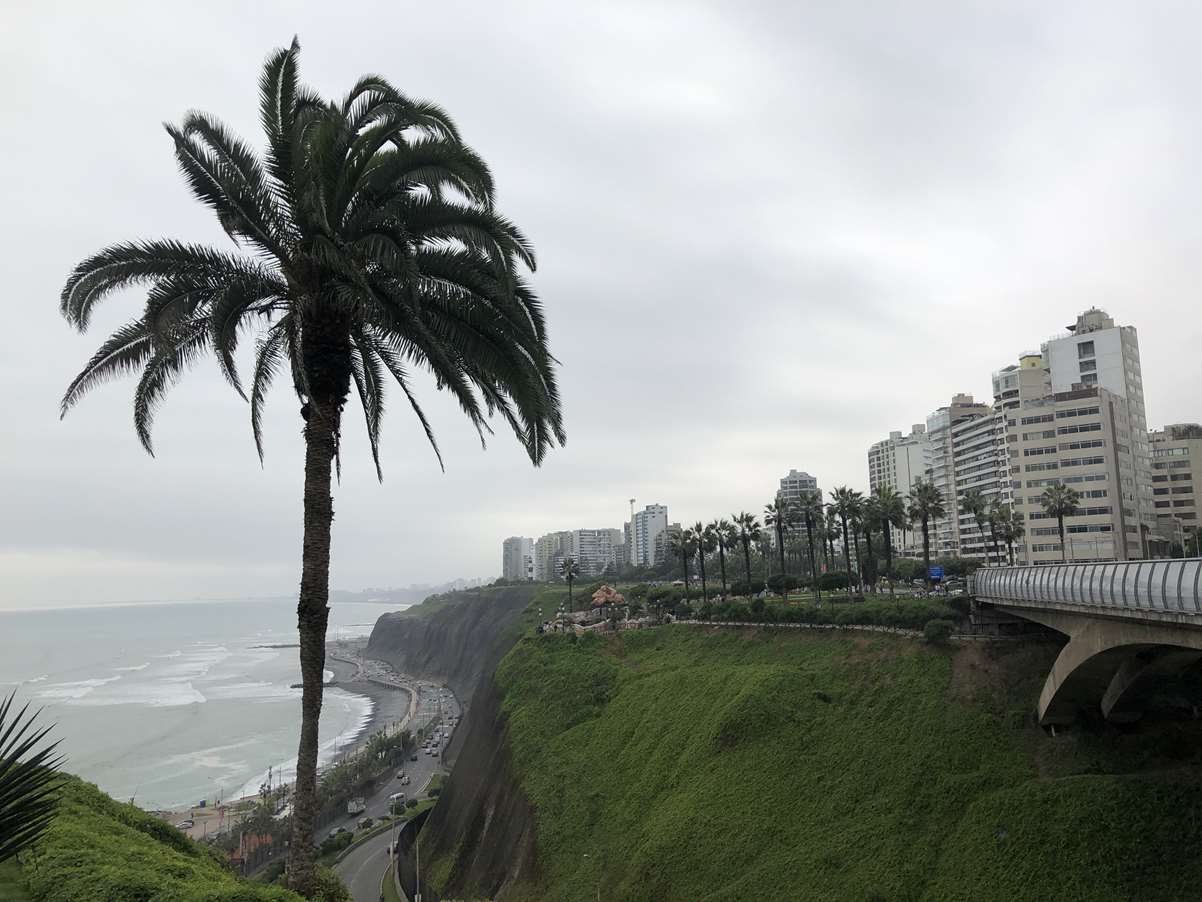

Love park. There are several sculptures with a love theme in this linear park along the cliff above the Pacific.

Linda, Ross and Emerson went to Huaca Pucllana. This vast pre-Inca archaeological site is in the middle of the city of Lima and is constructed using mud bricks.
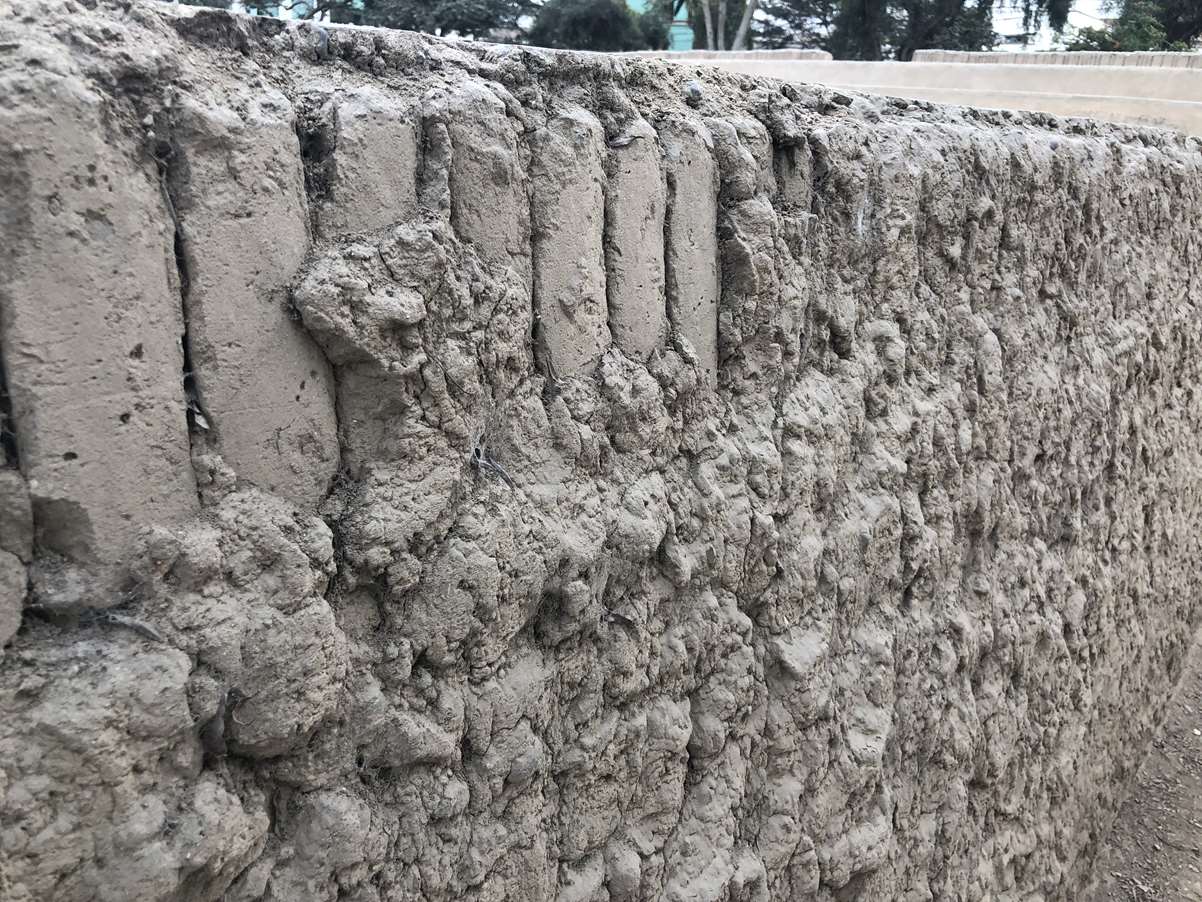
If Lima got more than its average of .3in of rain per year this would all be washed away. Lima is usually overcast due to the cold water from the Humbolt current. A mist-Garua-is often in the air.
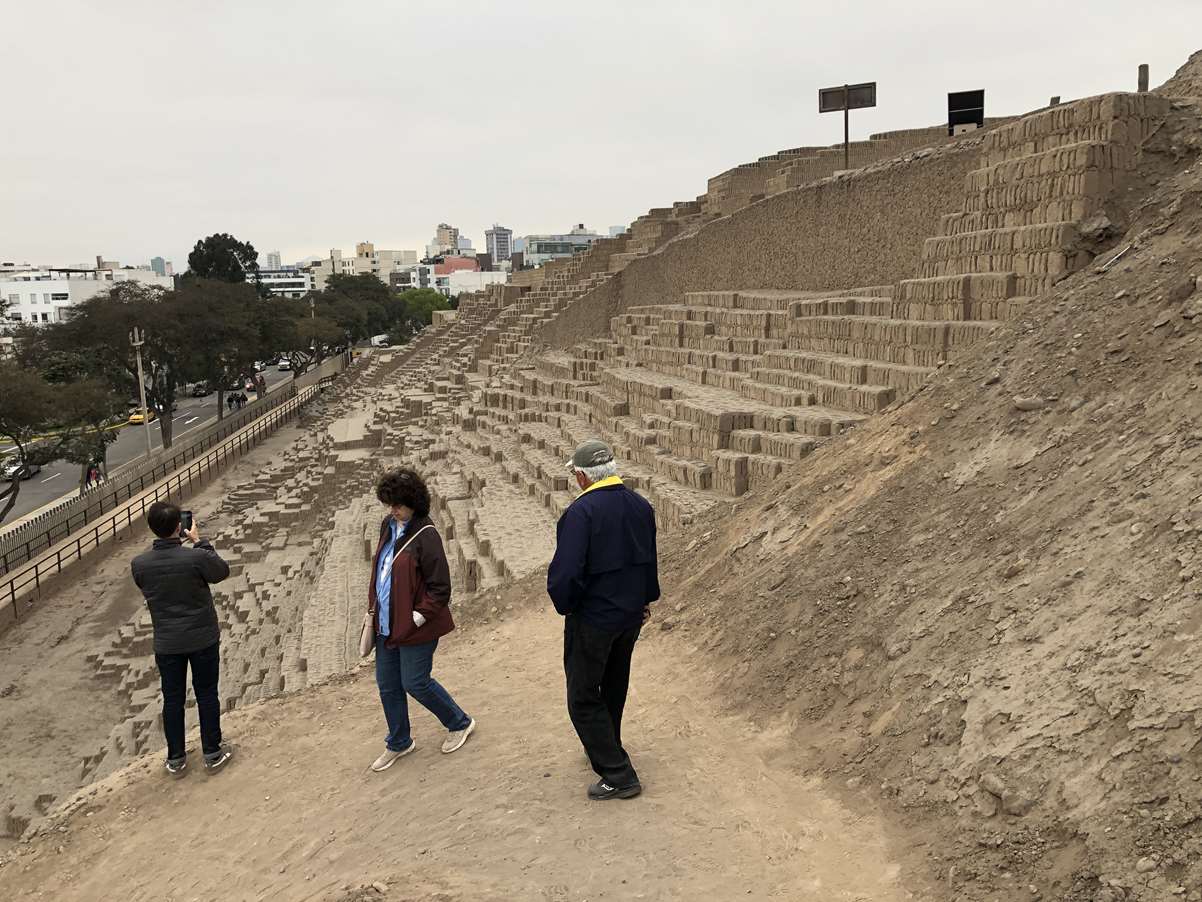
The archaeological site was largely abandoned until fairly recently. Peru has some pretty generous squatter rights laws and there are several families that live on the site and the government is having difficulty getting them to relocate.

Some mummies that were entombed in the complex
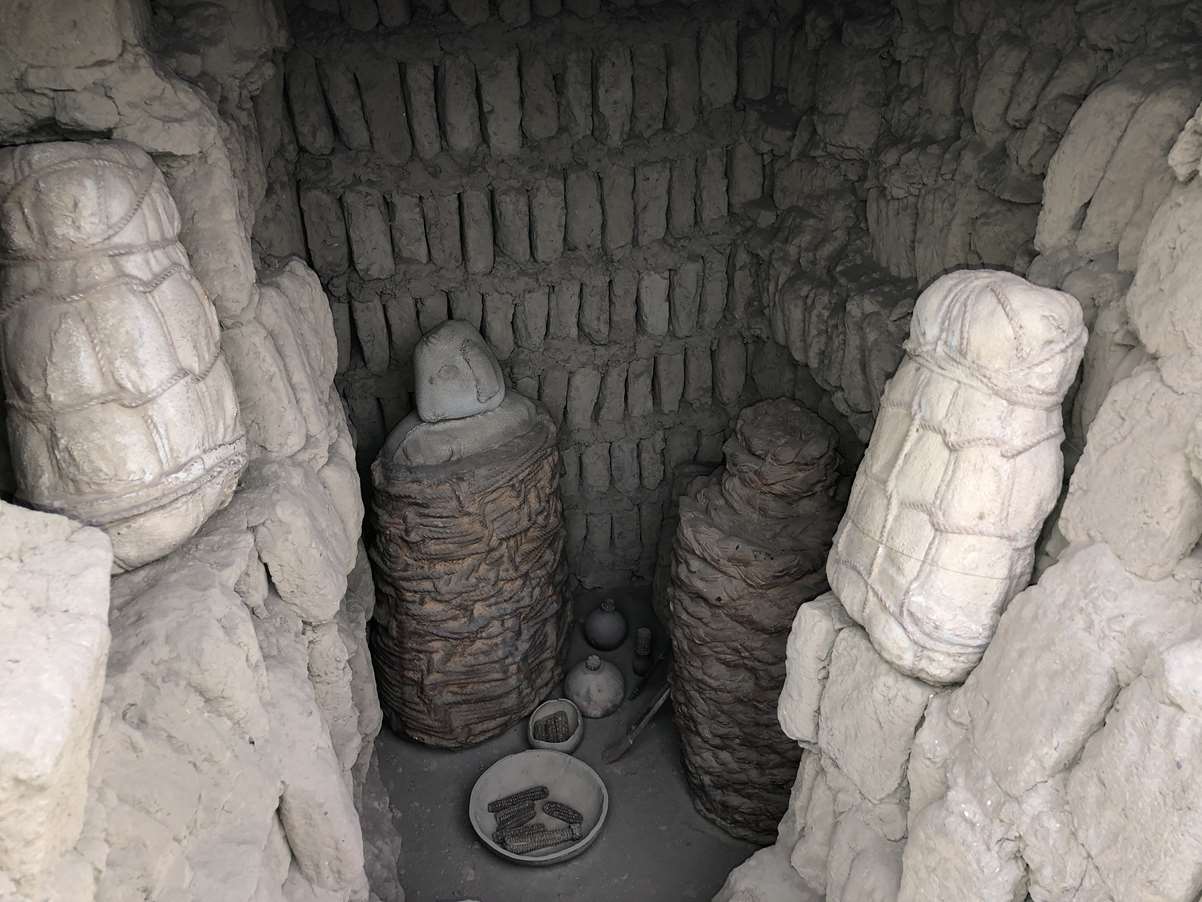
We visited a fish market on the Pacific coast.
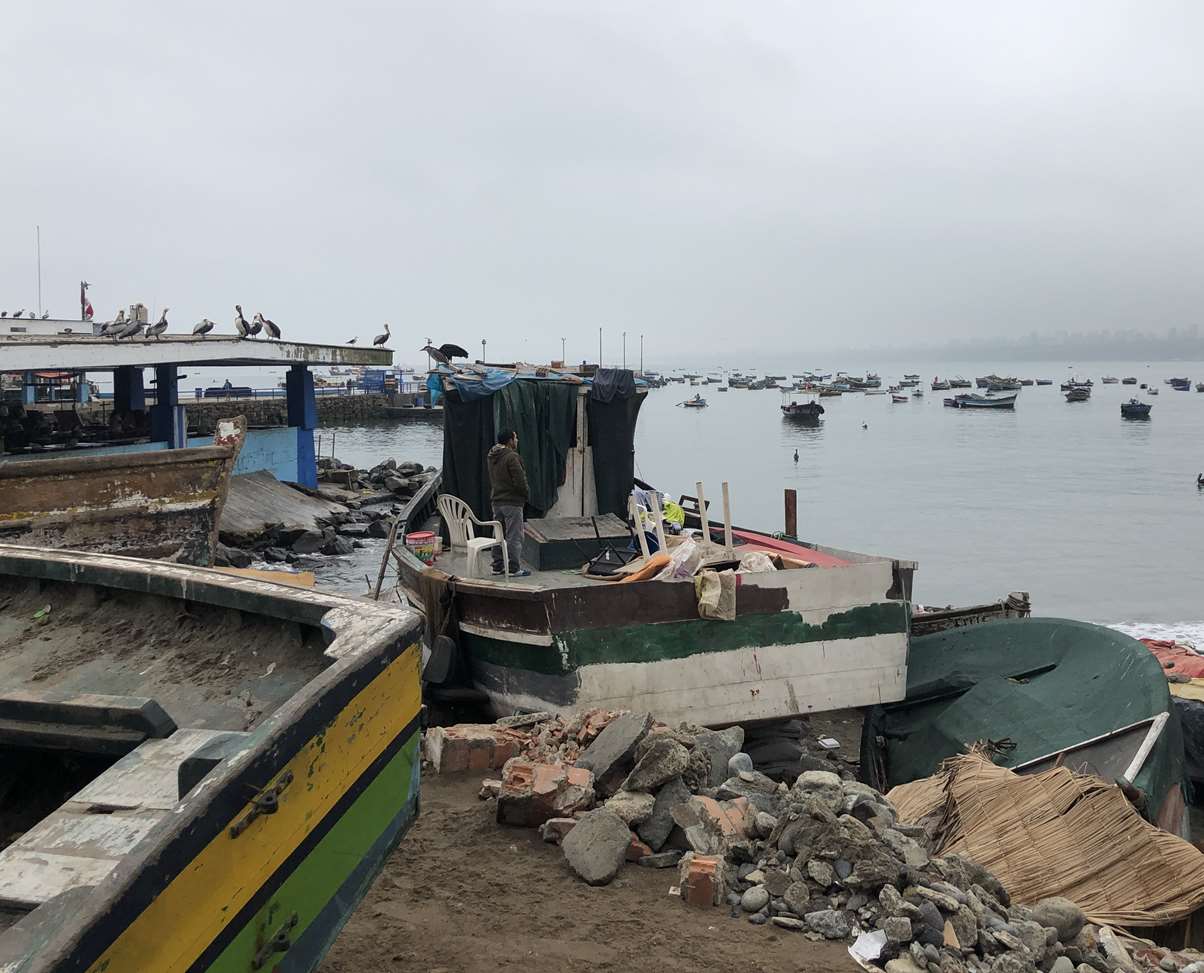
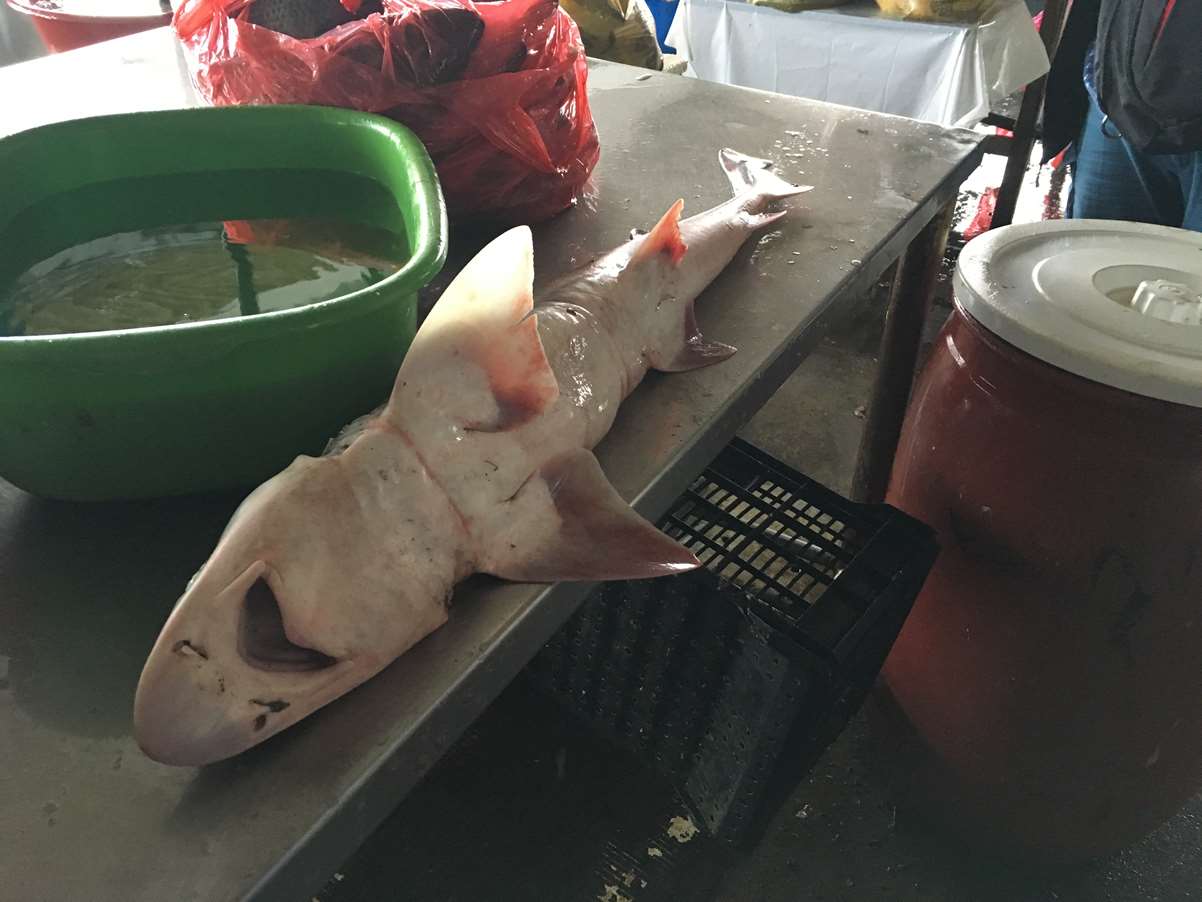
This lady was effortlessly fileting fish while talking to us.
Our bus took us to the private Museo Larco. We were impressed with all of the drivers we had on the whole trip.
The Museo Larco is a very well done private museum.
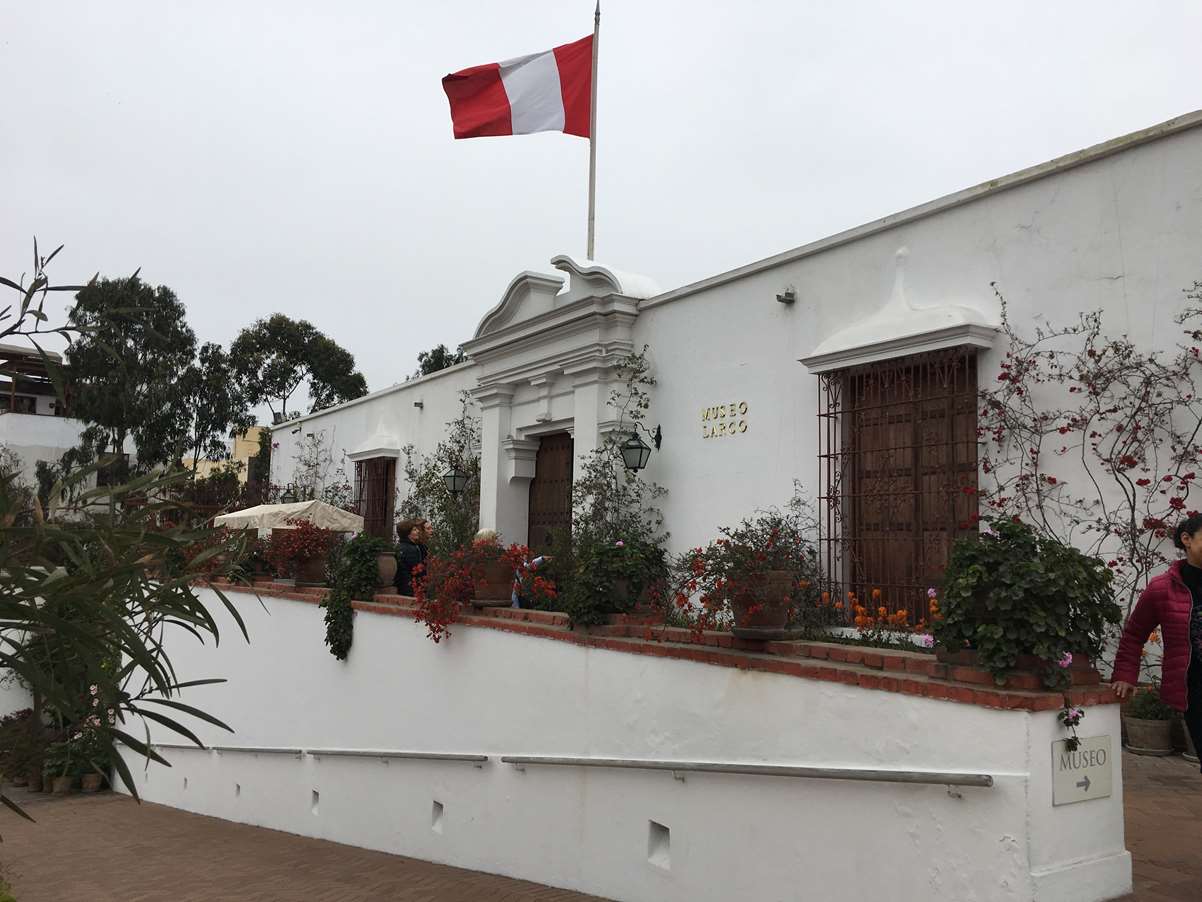
Some of the gold not shipped to Spain

Iconic to the Quechua society were the Quipus. The Spanish conqurers did a very good job of destroying the Quipus and a lot of details on how they were read.
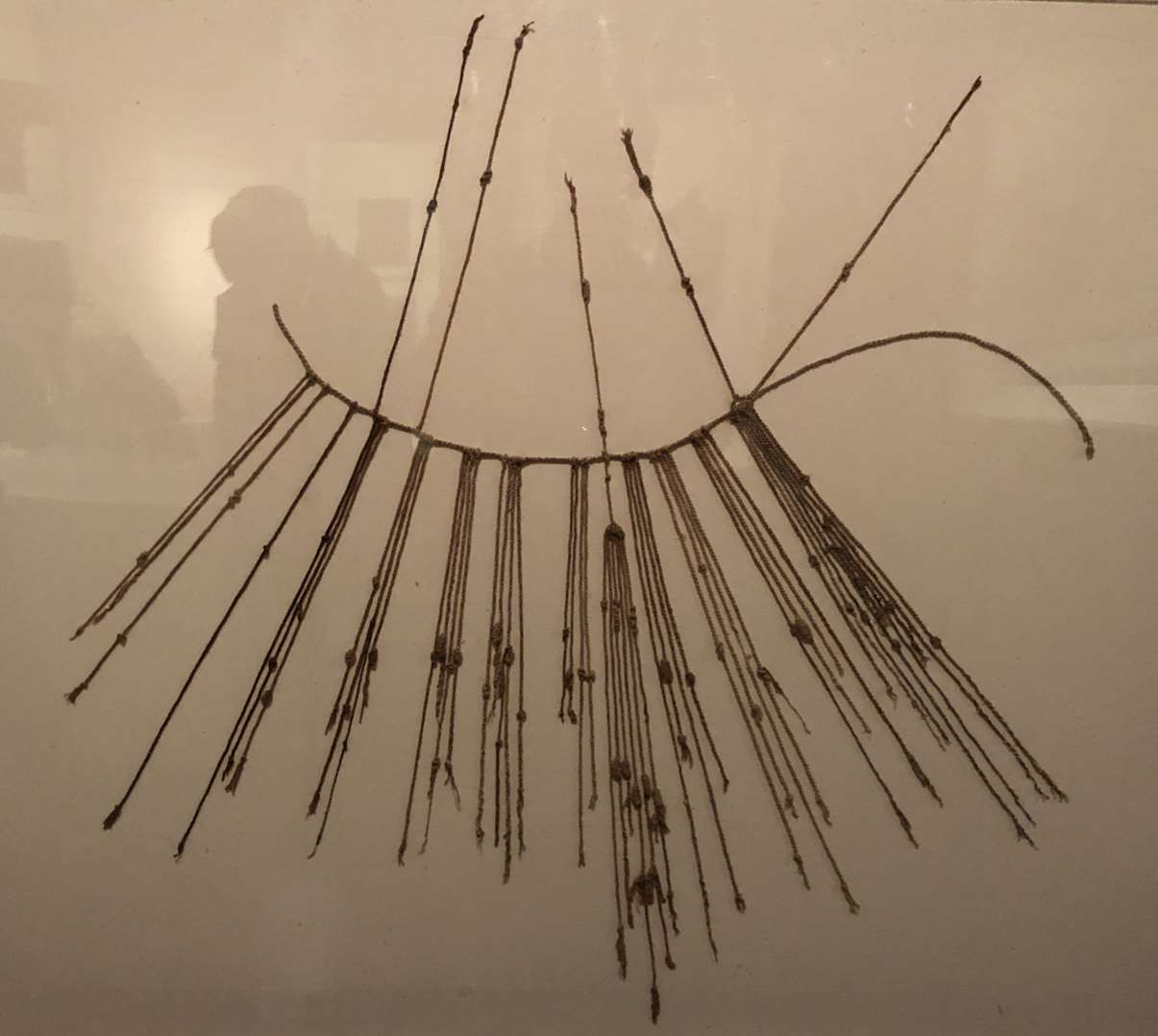
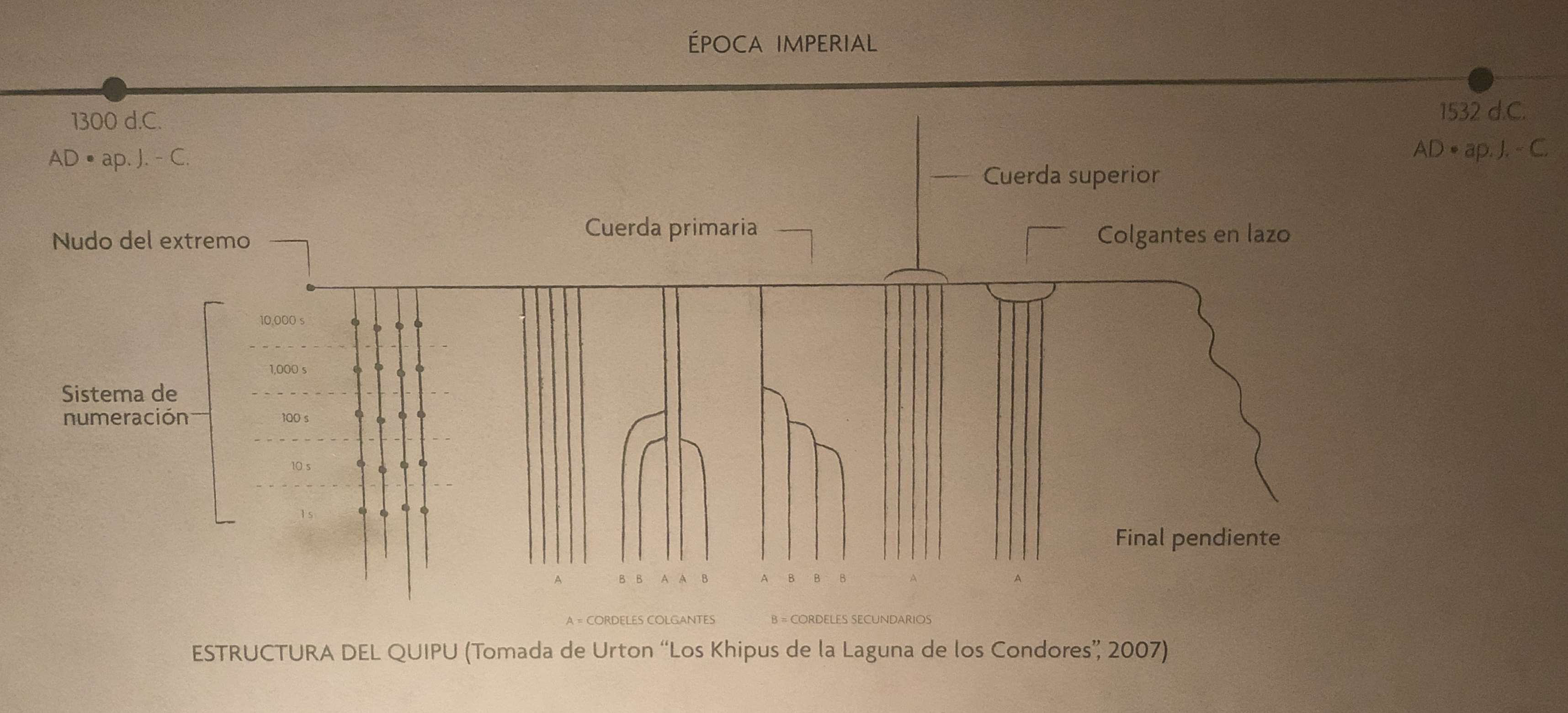
There is a mummy of a child inside this artifact
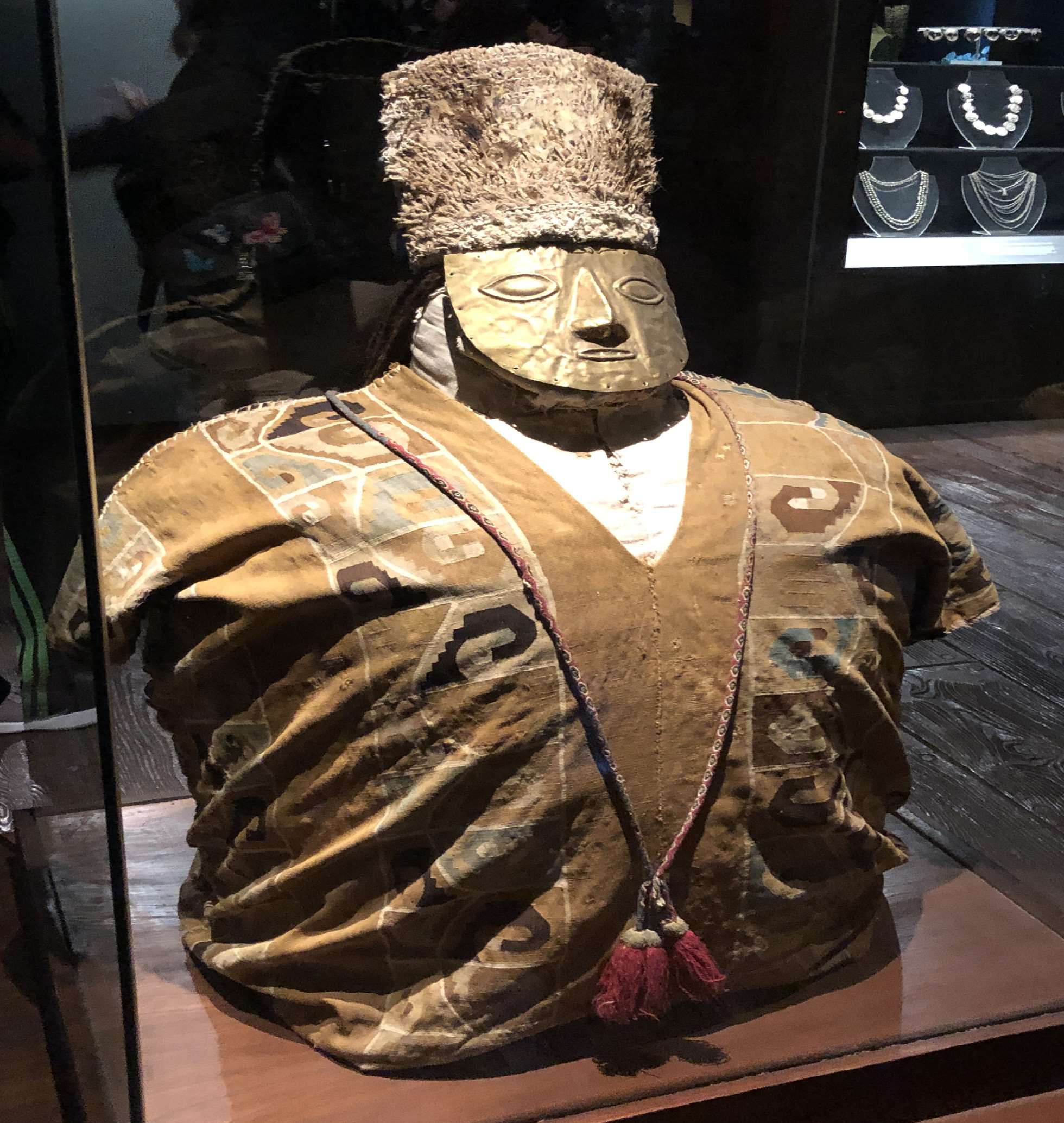
A somewhat salascious exhibit. I couldn't resist.

A shopping street in Lima. A nice pleasant stroll.

The square in front of the presidential palace.

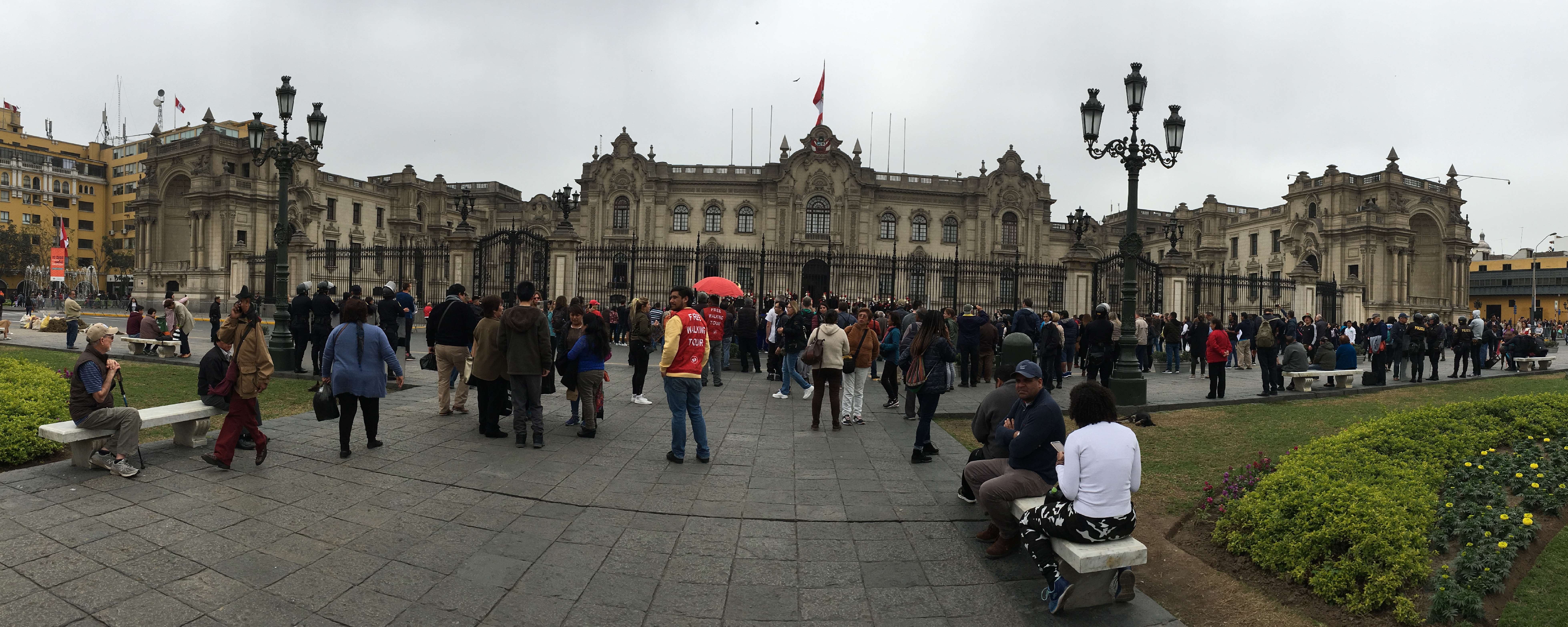
Another cultural experience by Bel.
Some of the indigenous people. They were mostly women and children coming into Lima from the higher altitudes to try and make a living.
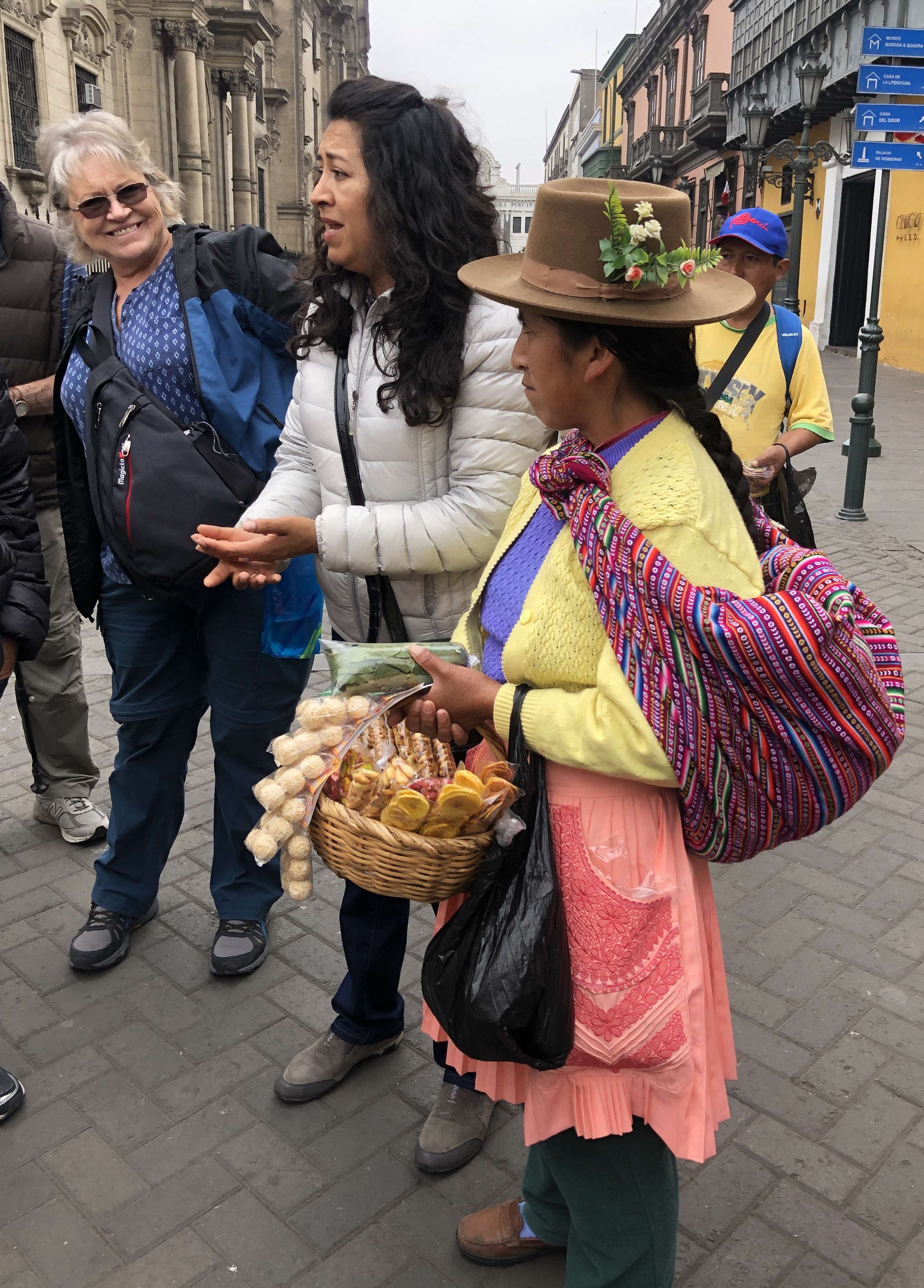

As churches were expanded and rebuilt the architectural style would change. In the monastary to the left there were many bones in the basement on display.
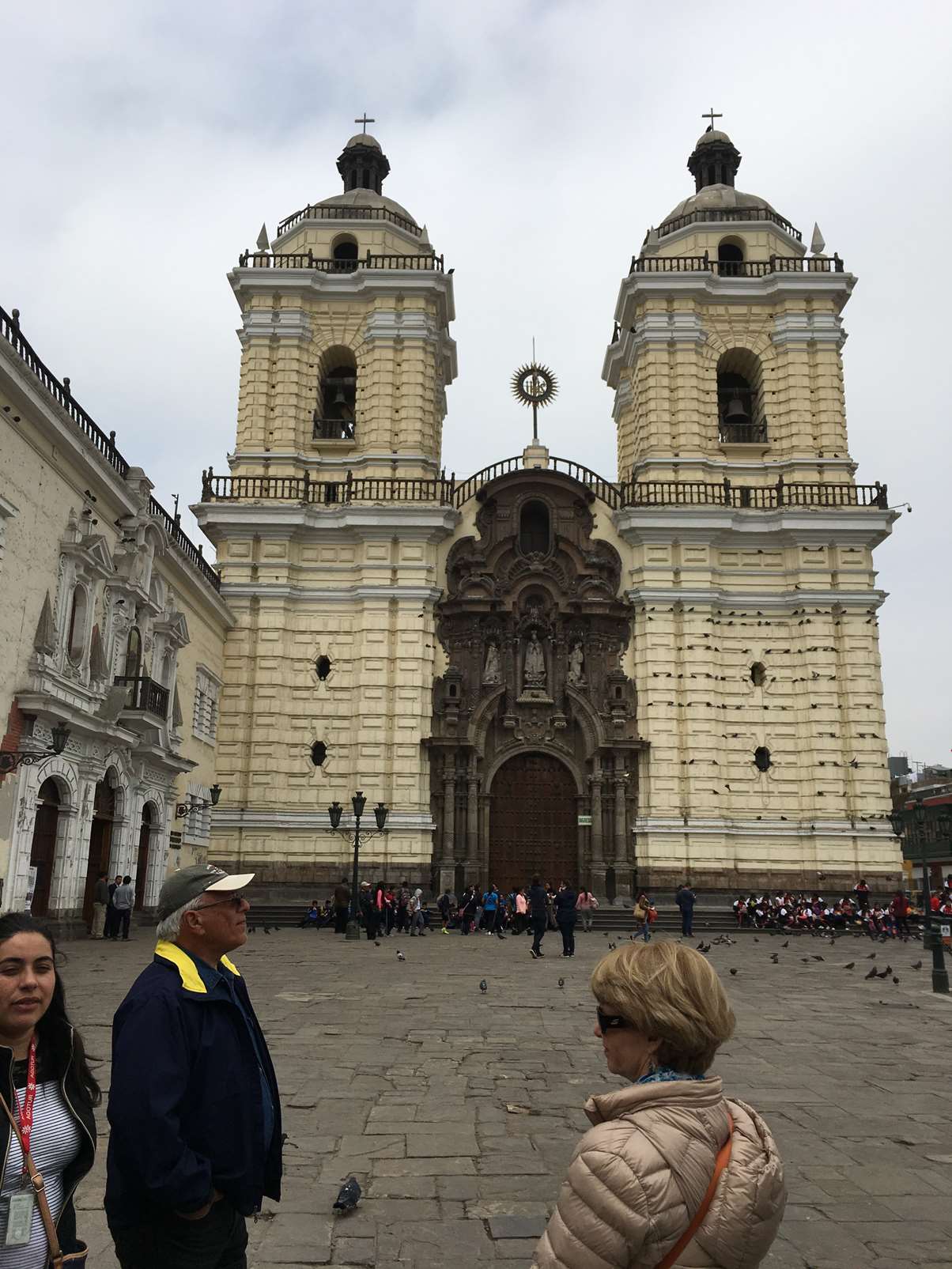
The statue of Pizzaro had been in a prominent location in the city and has been relocated to a less prominent location. A popular move for the indigenous people.
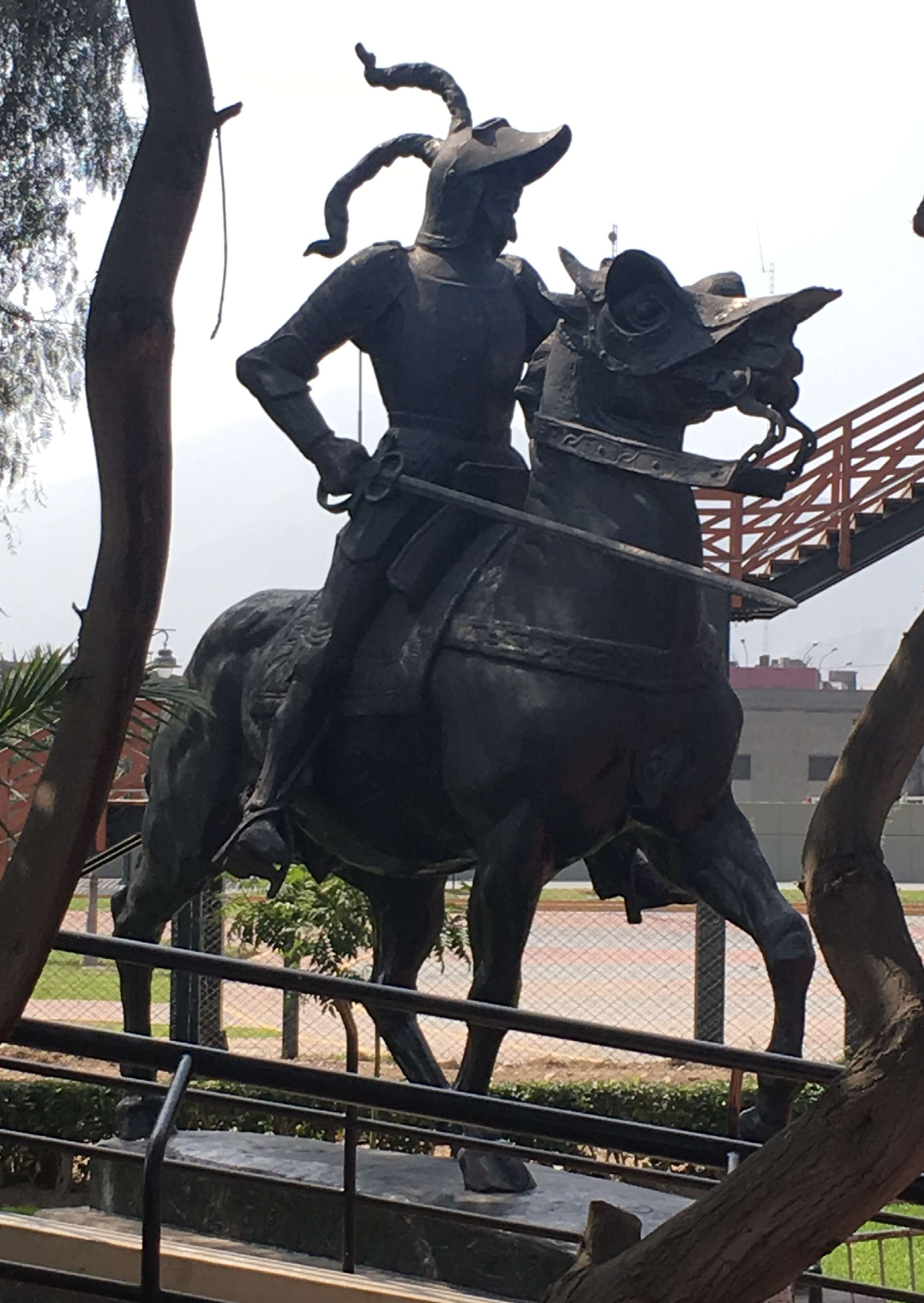
Around the corner from our hotel in Lima was a small shop where we had some of the best hot chocolate along with an order of churros. The place was recommended by one of our fellow travelers. While there the sweetest little girl came to our table to sell us something. I didn't see it but when the manager shooed her away Linda saw her reaction and it wasn't at all sweet. Good actors everywhere.
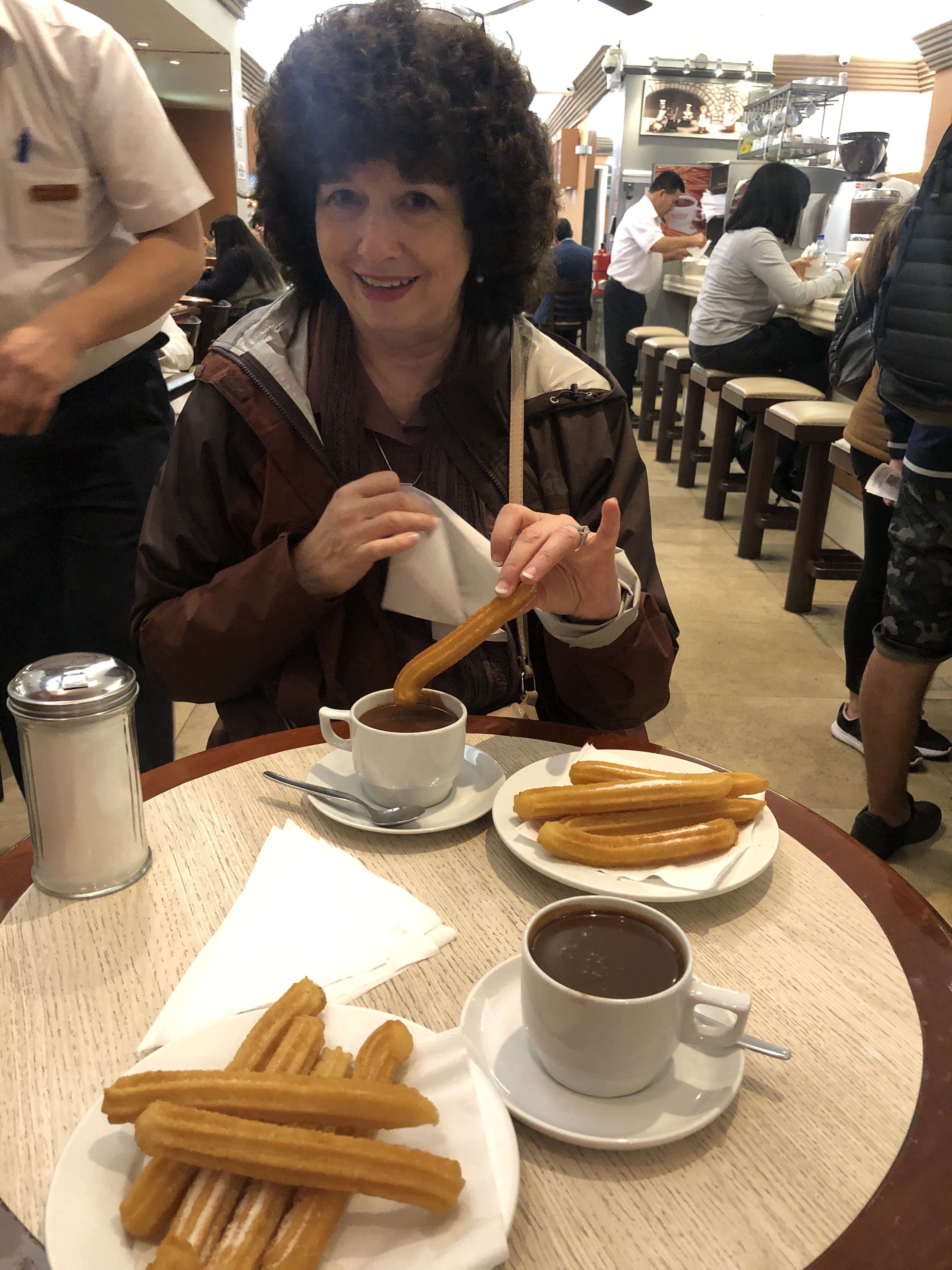
On the way to the Sacred Valley
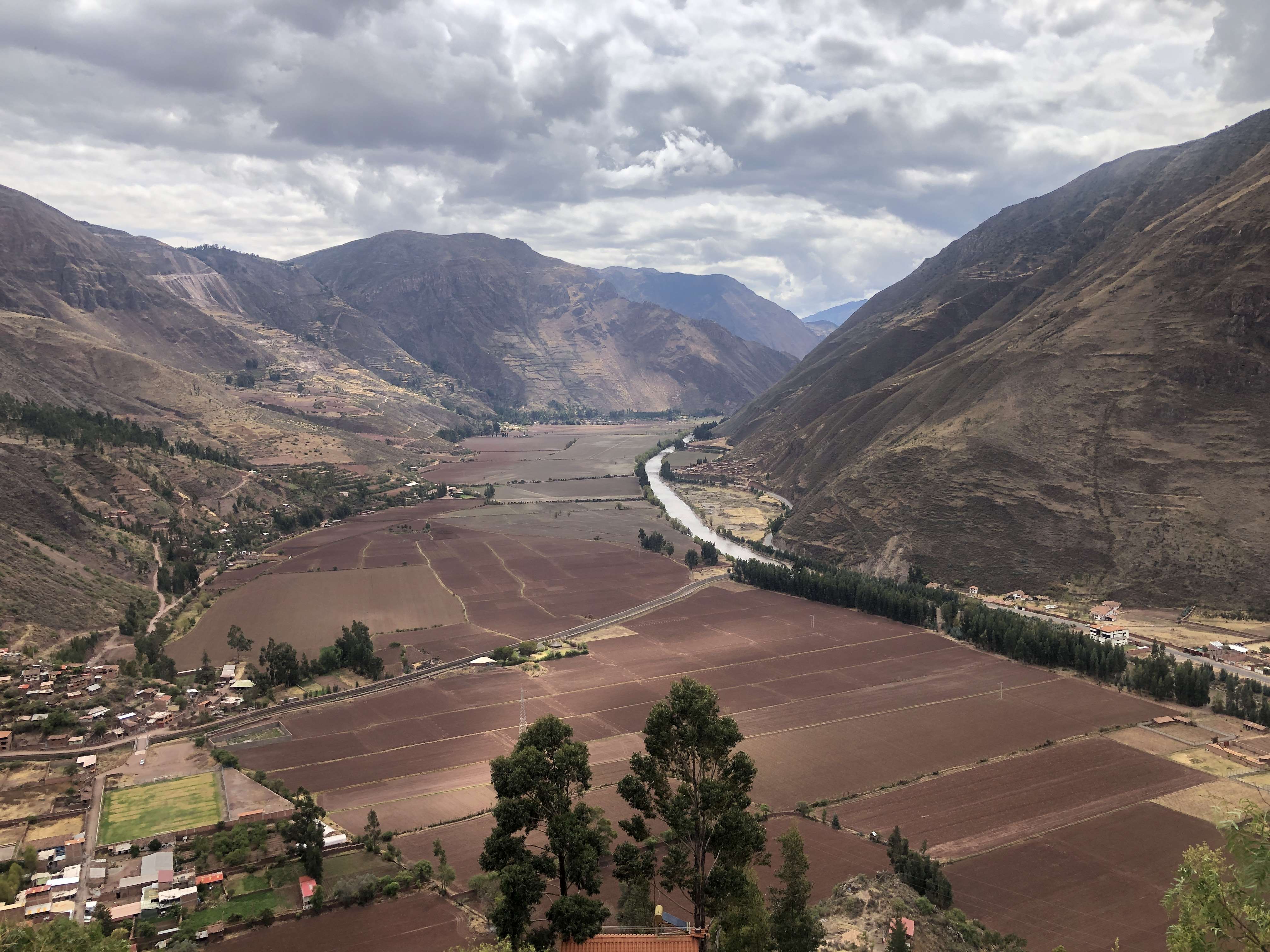
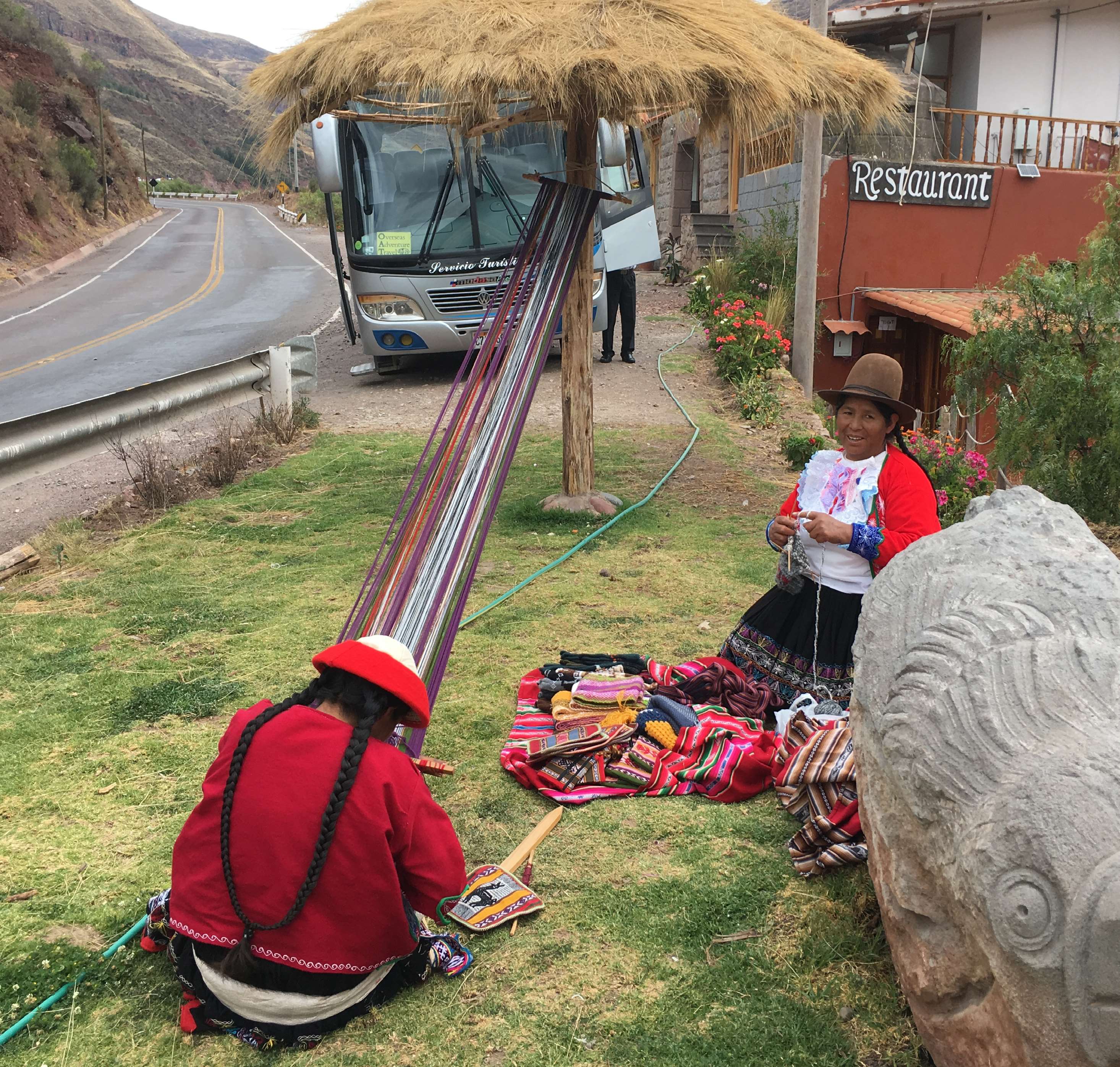
A pot holder that this women weaved. We bought it for ?$10.
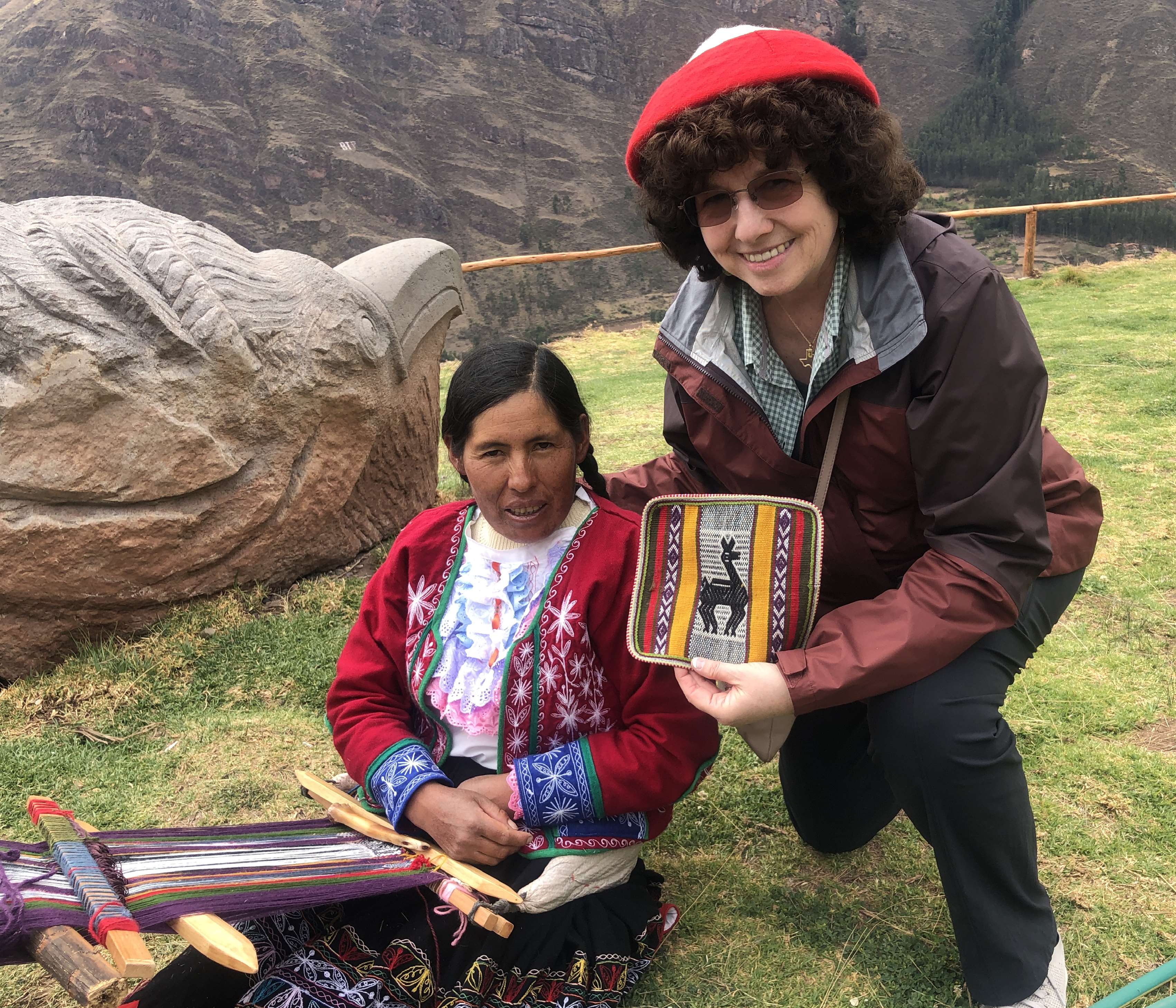
A stop along the way where we were introduced to a local lady who sells coca leaves.
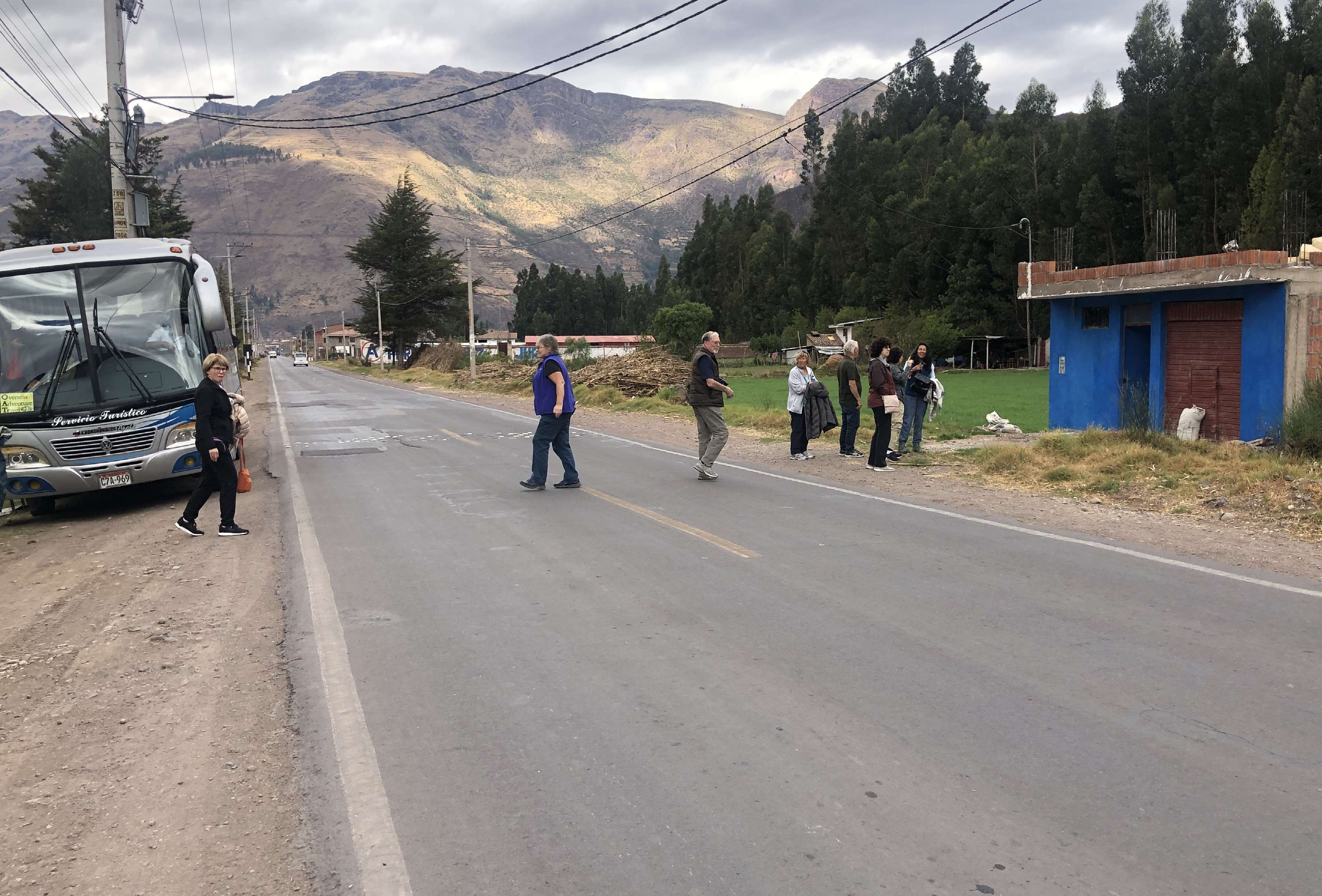
Our "dealer". She wetted a coca leaf and put it on her forhead to show how the indigenous people use the leaf for headache releaf. We all bought a small bag of leaves. For altitude help you put a small stack between your teeth and cheek and leave it there. She sells her leaves to people in the smaller rural villages. Her farm plot is in the mountainous areas and some smuggling is required to get it into the valley. She is using the proceeds to buy the small plot of land and house where we met her.
We had a stop at a local elementary school. As we got off of our bus the kids came out grabbed our hands
and led us back to their classroom
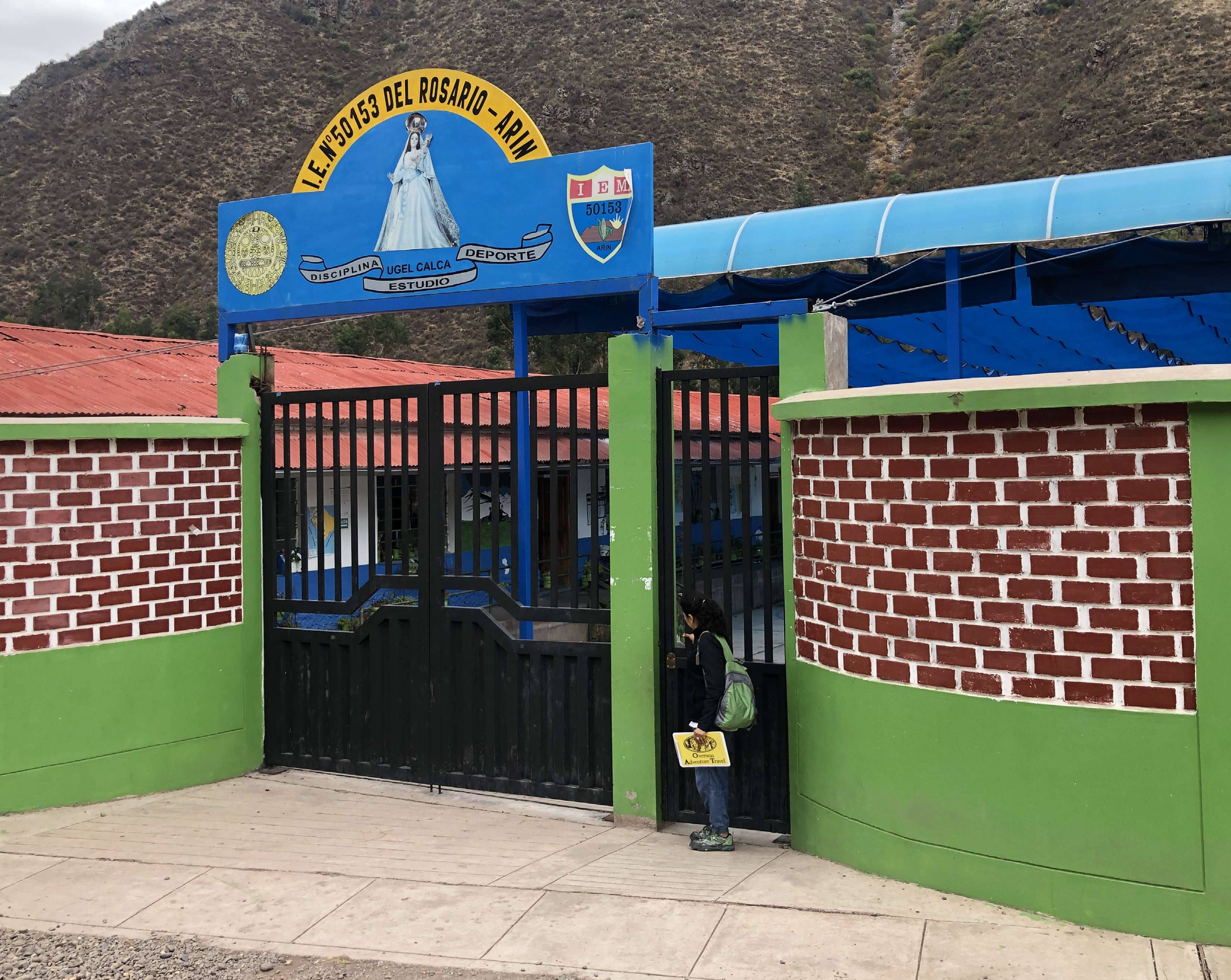

We learned Ben speaks Spanish. I think he would be a great teacher.
The children performed for us. Many schools require the children to wear uniforms but I think in this school they don't have to as they come from very poor families.
We performed for the children. When Bel sprung it on us at the very very last moment that we had to perform we were a bit caught off guard but Linda suggested the Hokey Pokey which turned out to be an excellent idea.
One night in our hotel in Urubamba Bel took us into a ball room and introducted us to a native Peruvian lady who told us her story during the time Fujimori was President. She had a large family and one morning as she was going to work pushing her food cart a group of men from the government came and said she needed to go to the hospital for an examination or tests - some excuse -. While there she was conned into being sterilized. She was in the hospital for awhile with her family not knowing anything about what had happened. Once she got home she was in bad shape for a long time. The Peruvian government has said 272,000 women and 22,000 men were sterilized. Gina was particularly incensed by the discrepancy between men and women.
The lady was dressed in her native clothing with a distinctive hat indicitive of where she was from etc. She had really long hair with two braids that were tied together toward the ends. Bel pointed out that a lot of the local women use hair extensions.
Markets were always fun to explore. This one in Urubamba was no exception
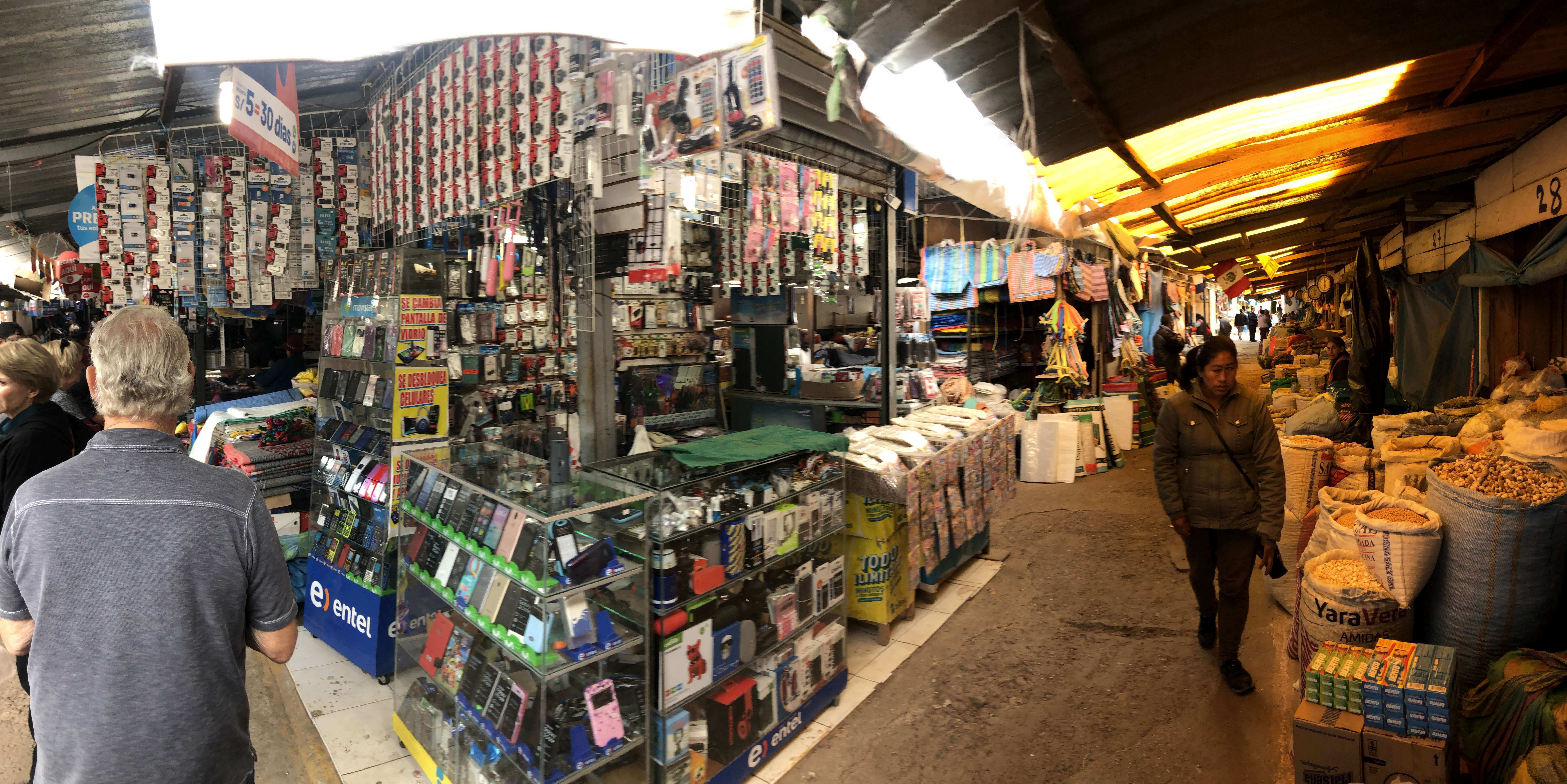
Another market view.

Bel gave each of us a slip of paper with ingredients for an in home visit meal.
Our guideline was to not show the slip but ask where to find our goal.
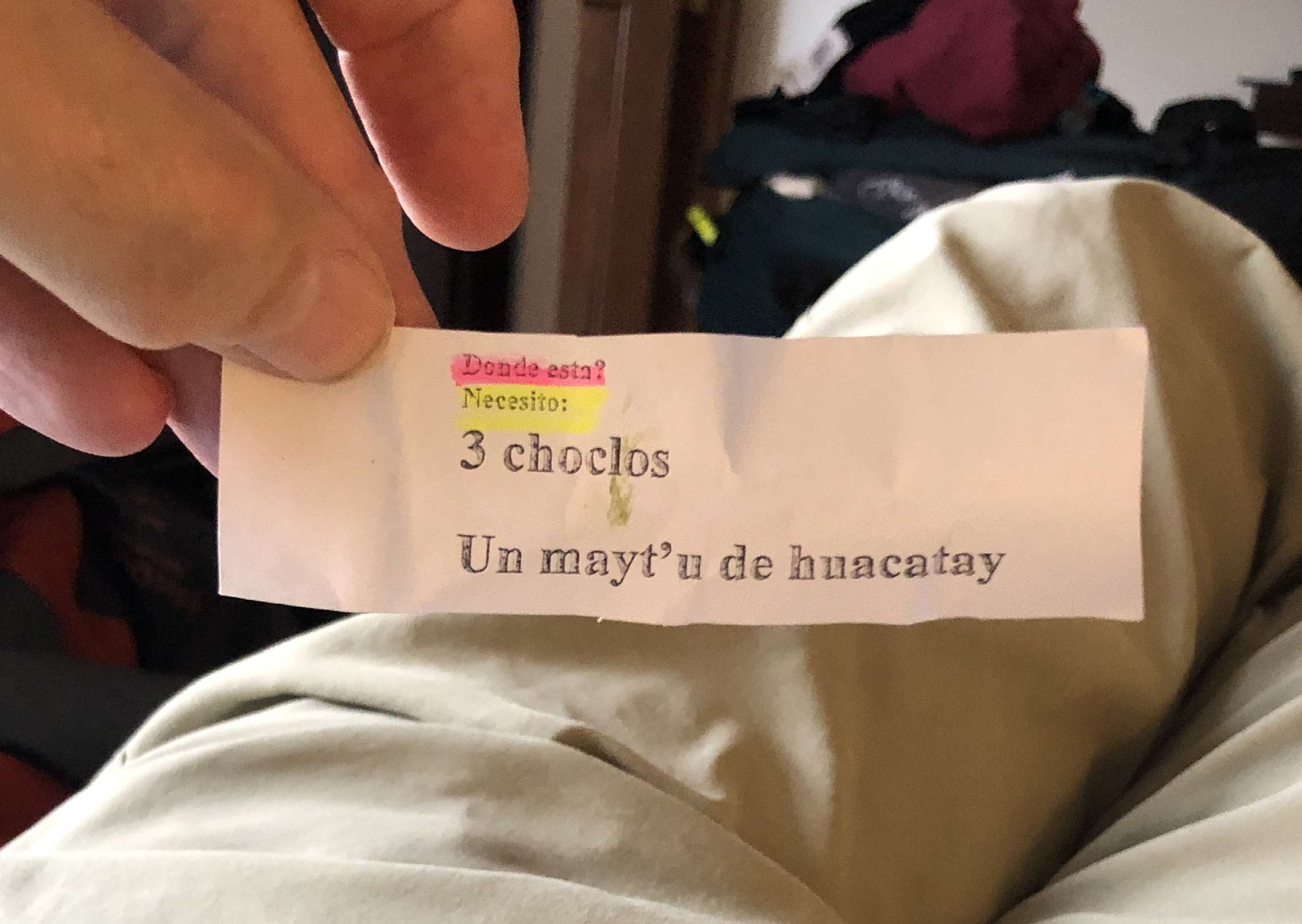
It didn't take long to find our stuff.
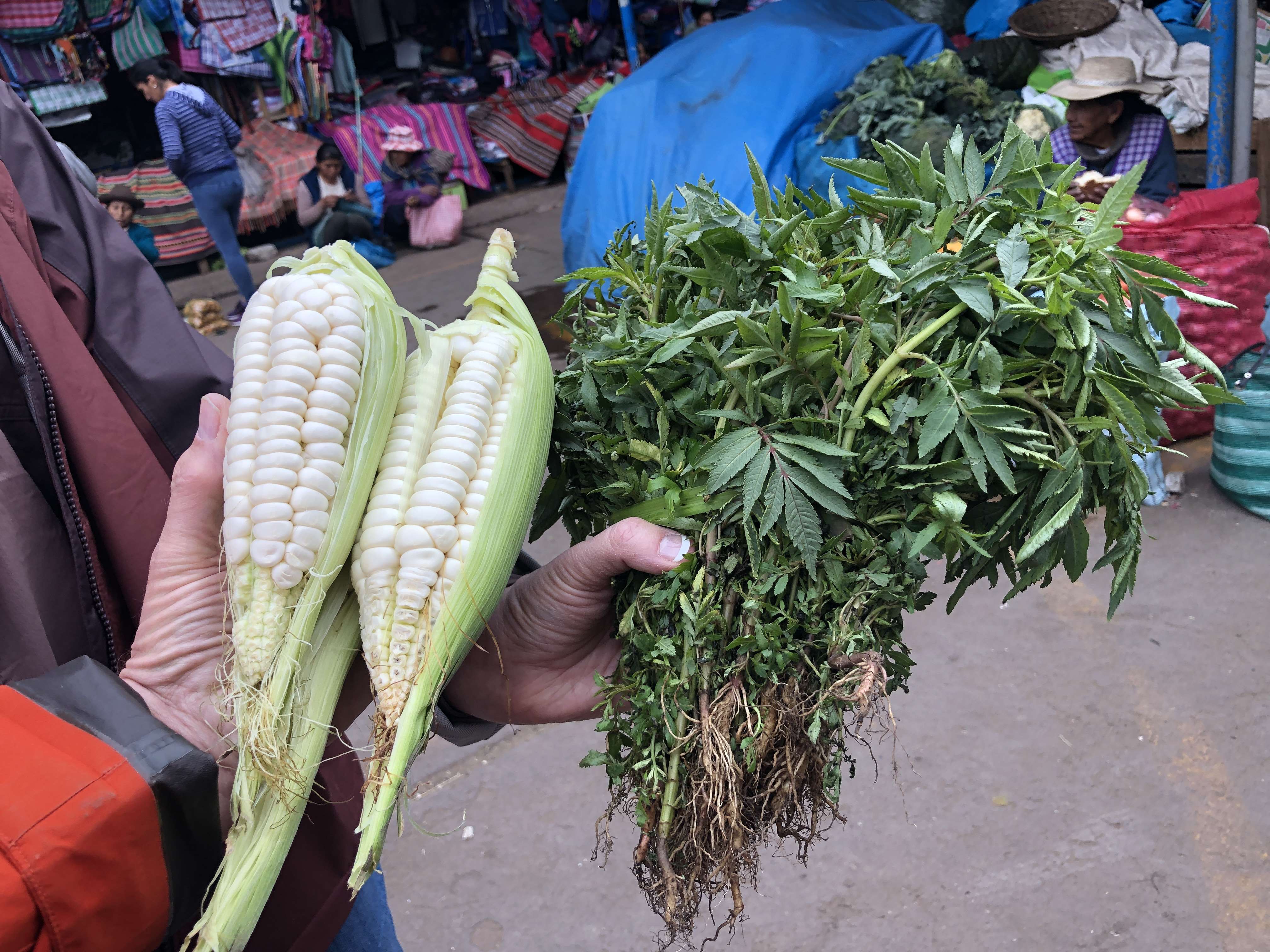
The vendor of the choclos.
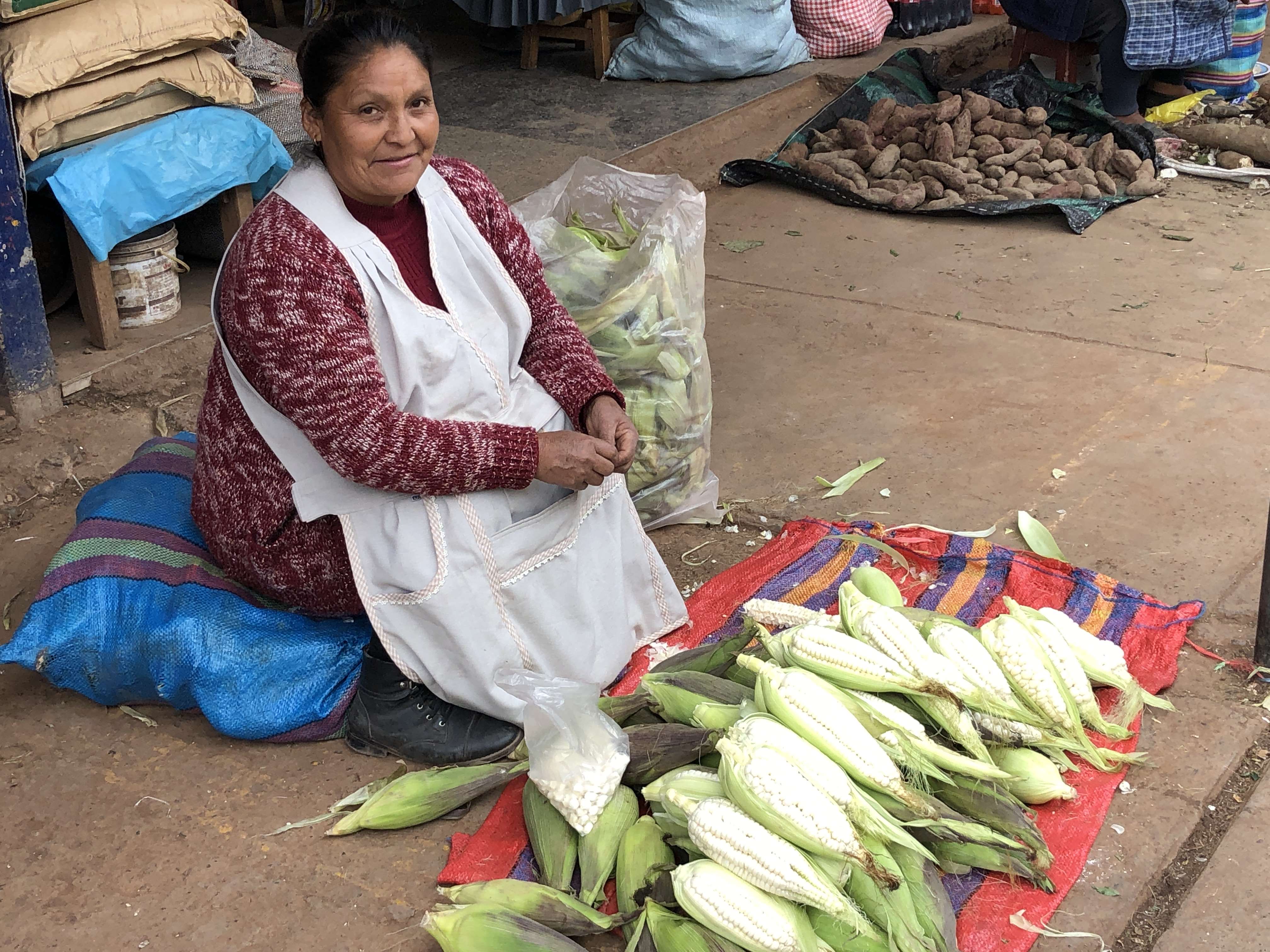
Bel arranged for us to ride to the next stop in tuk-tuk's (MotoTaxi)
Our next stop was a Chicharia. We saw a lot of Chicharia's alongside the road and most looked very primative. To show they had chicha they had a pole outfront with just an old plastic grocery bag on it. This one appeared to be much nicer

Bel telling us how the chicha is made. It's about a 11 minute video
A game called Sapo
We go to the home where we will have a meal with at least some of the ingredients we picked up in the market. The home had been destroyed in a flood and Grand circle travel had financed the reconstruction. One room was made big enough to accomodate the groups coming through
The courtyard showing a small garden and the Cuy (guinea pig) pen.
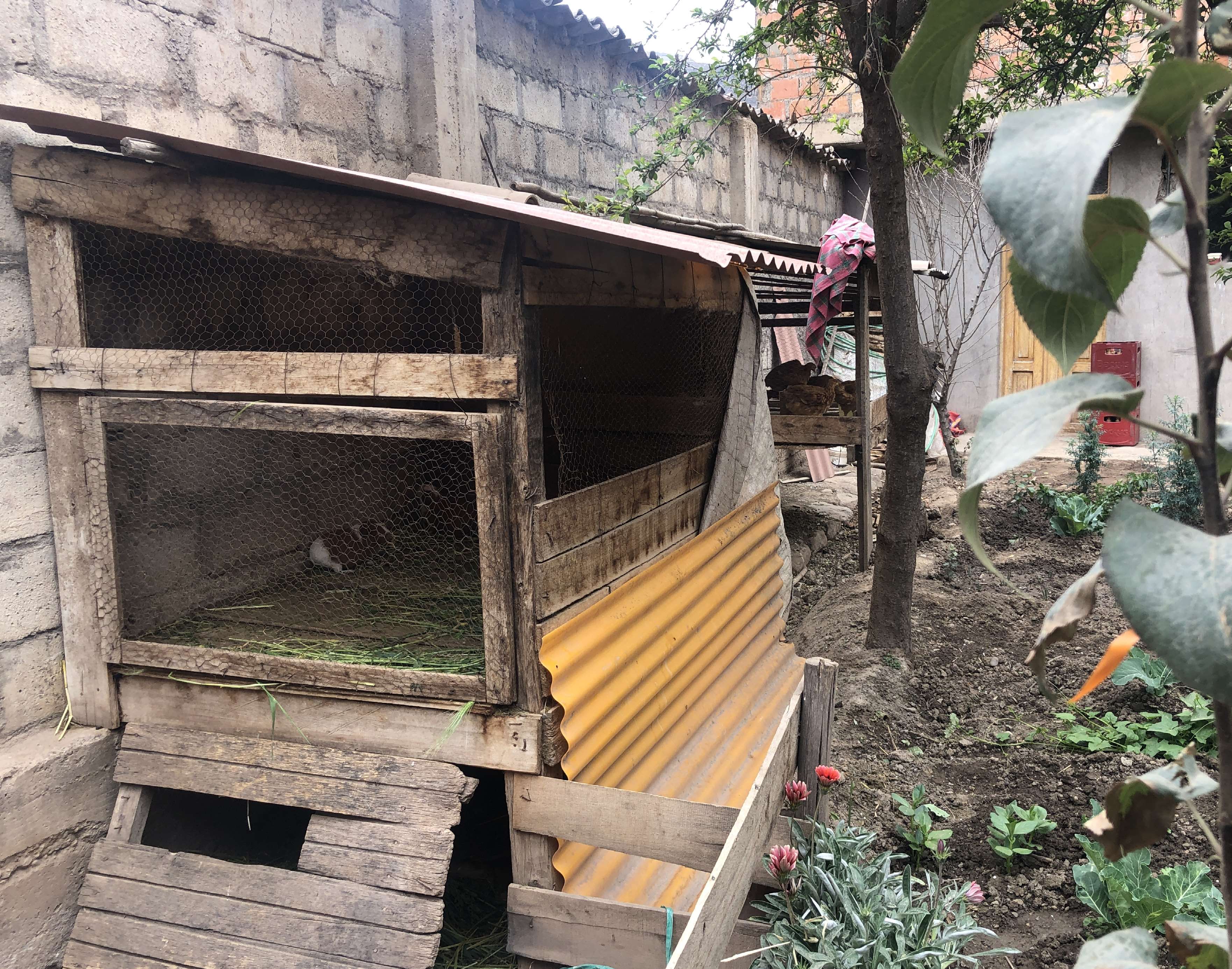
Randy finishing up our "Salsa"
Gina and Sharon helping to prepare our lunch.
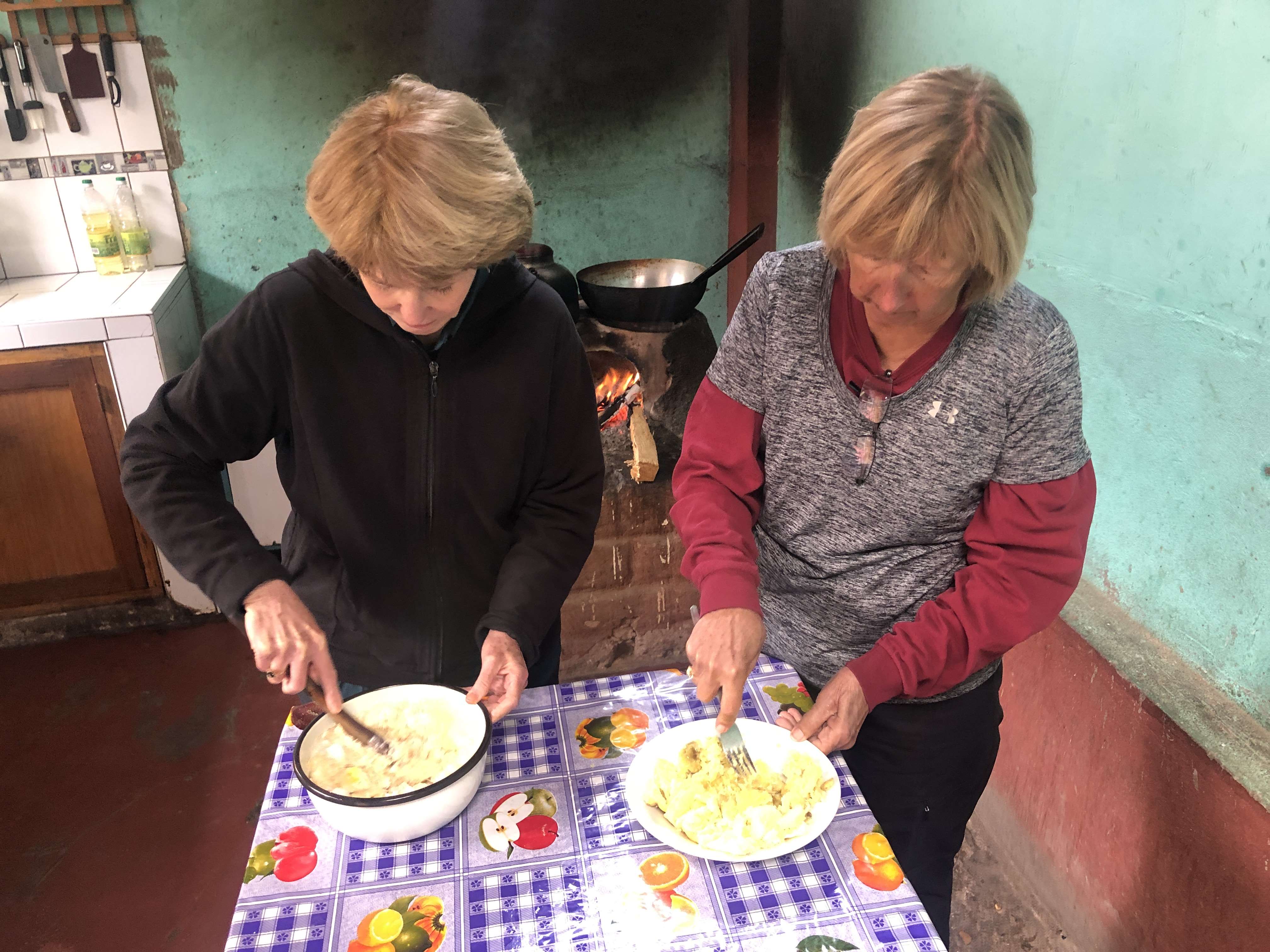
Linda helping in the kitchen
Cuy as a part of our lunch. I had a small piece, it was ok but there were
a lot of small bones. Probably ribs.
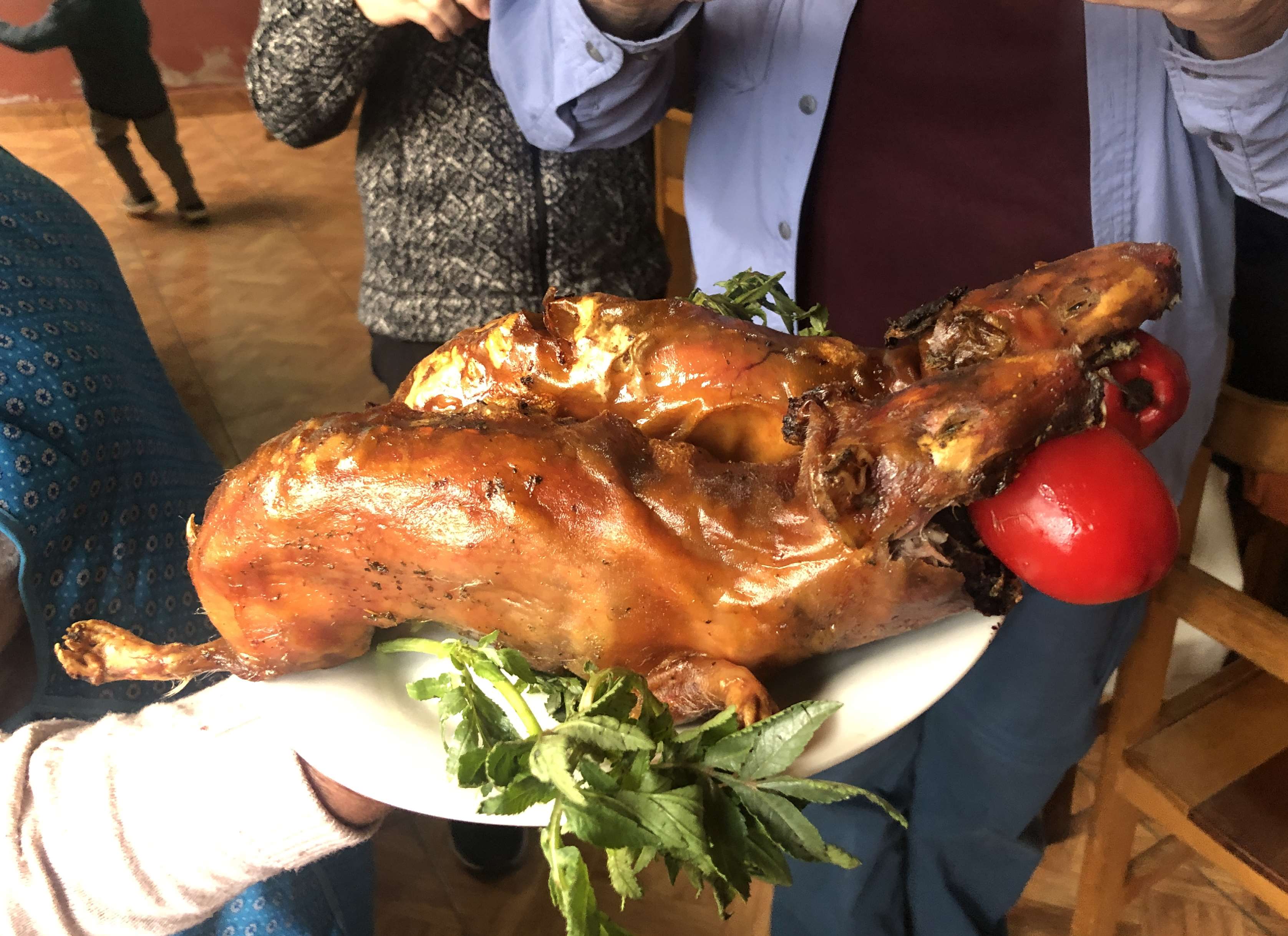
We went to a ceramics workshop called Ceramicas Seminario. The workshop was started by an architectic named Pablo Seminario. He is a self taught ceramisist and employees around 50 people. His work is recognized around the world.
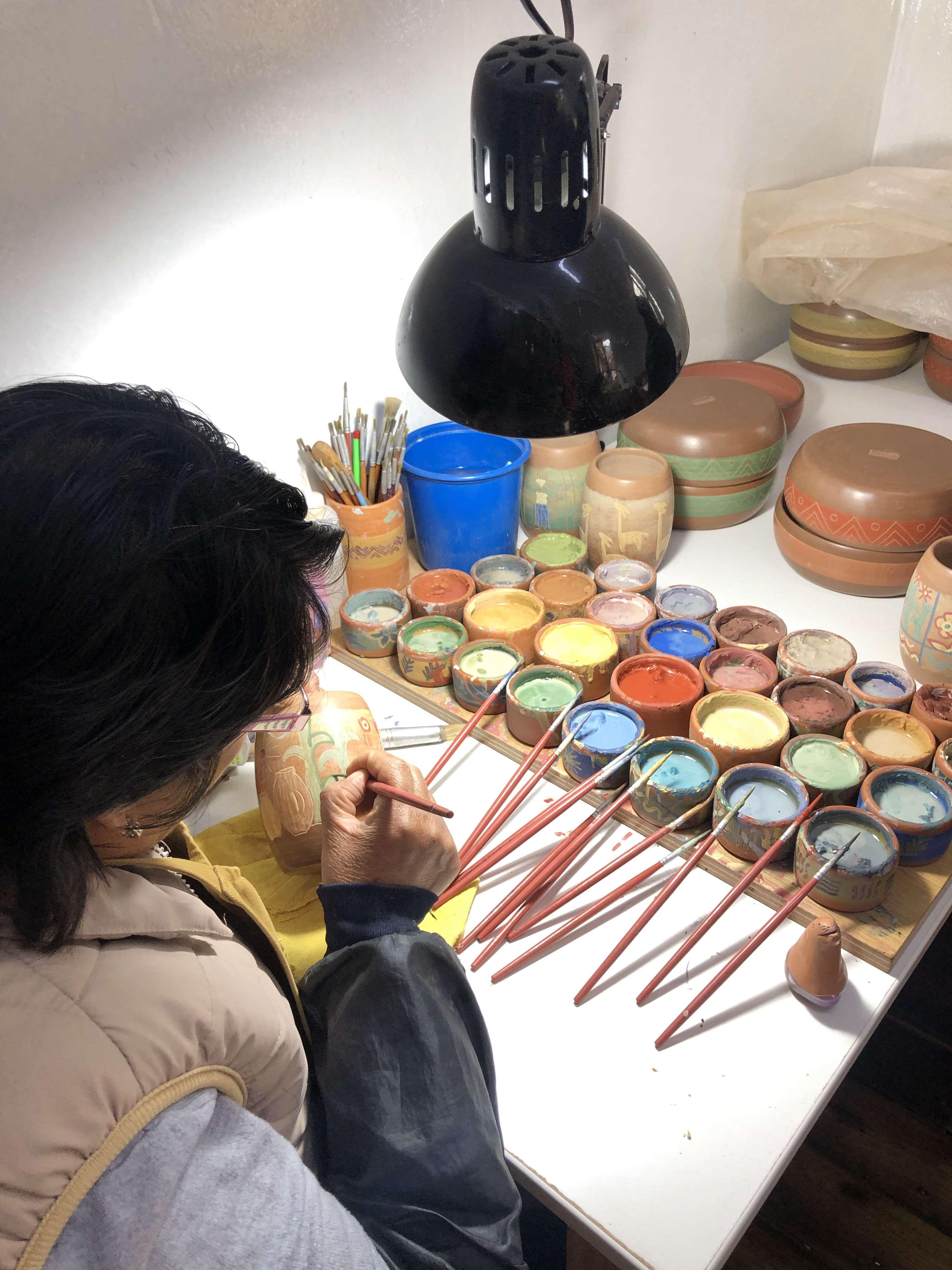
Some of his pieces. He tries to maintain Peruvian themes.

Pablo Seminario greeted us in his workshop. He was a nice soft spoken man and he took a nice interest in some of the work that Ben showed him from his ceramics class.
On our way to Aquas Calientes and Machu Picchu we stopped for a blessing to the Pachamama (earth/time mother). The Shaman was very serious and the entire ceremony took about 45 minutes. He is speaking the native language which was also used by in Inca Quechua (KETCH-wah). The shaman is a Roman Catholic who still follows the traditions of his people. The video is about 15 minutes long.
To end the ceremony he walked to each of us with the bundle, stopped in front and did a blessing? and then put it on the fire and burned it.

We caught the train in Ollantaytambo (Oy-yan-tie-TAHN-boh). We walked around the town before getting on the train. The old stones are still a part of the basic structure of the town.
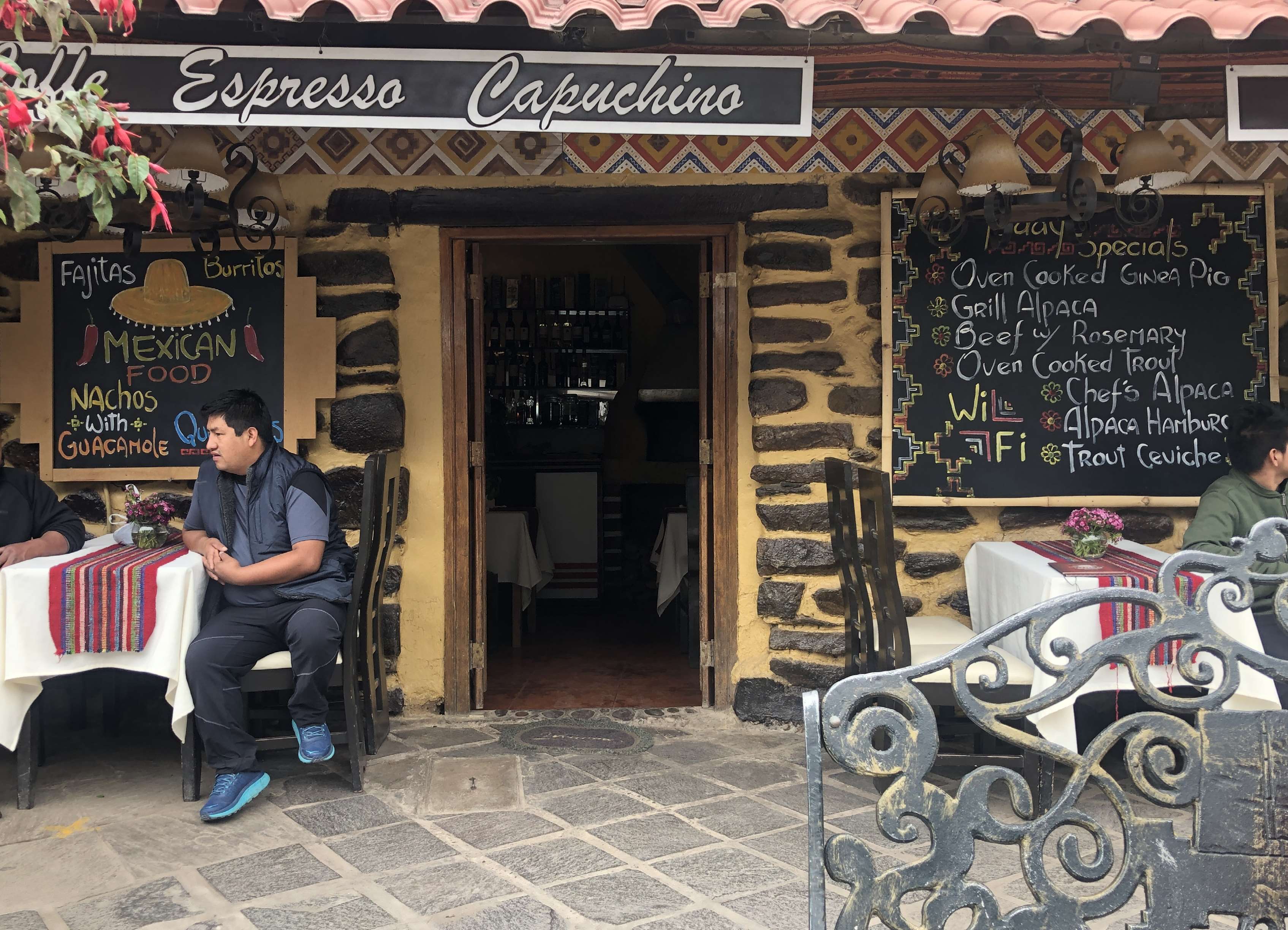

On the train.
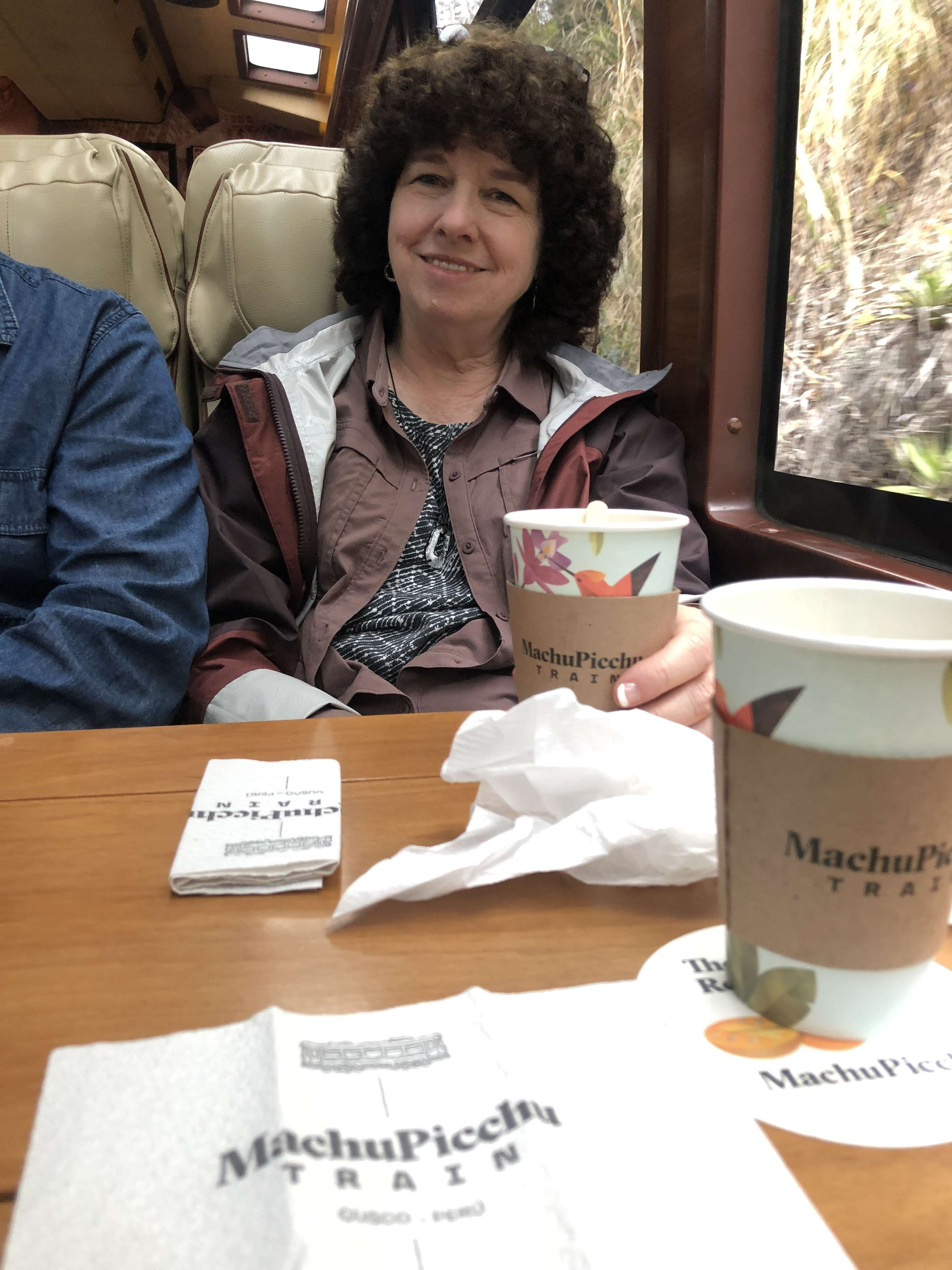
Waiting for the bus to take us to Machu Picchu.
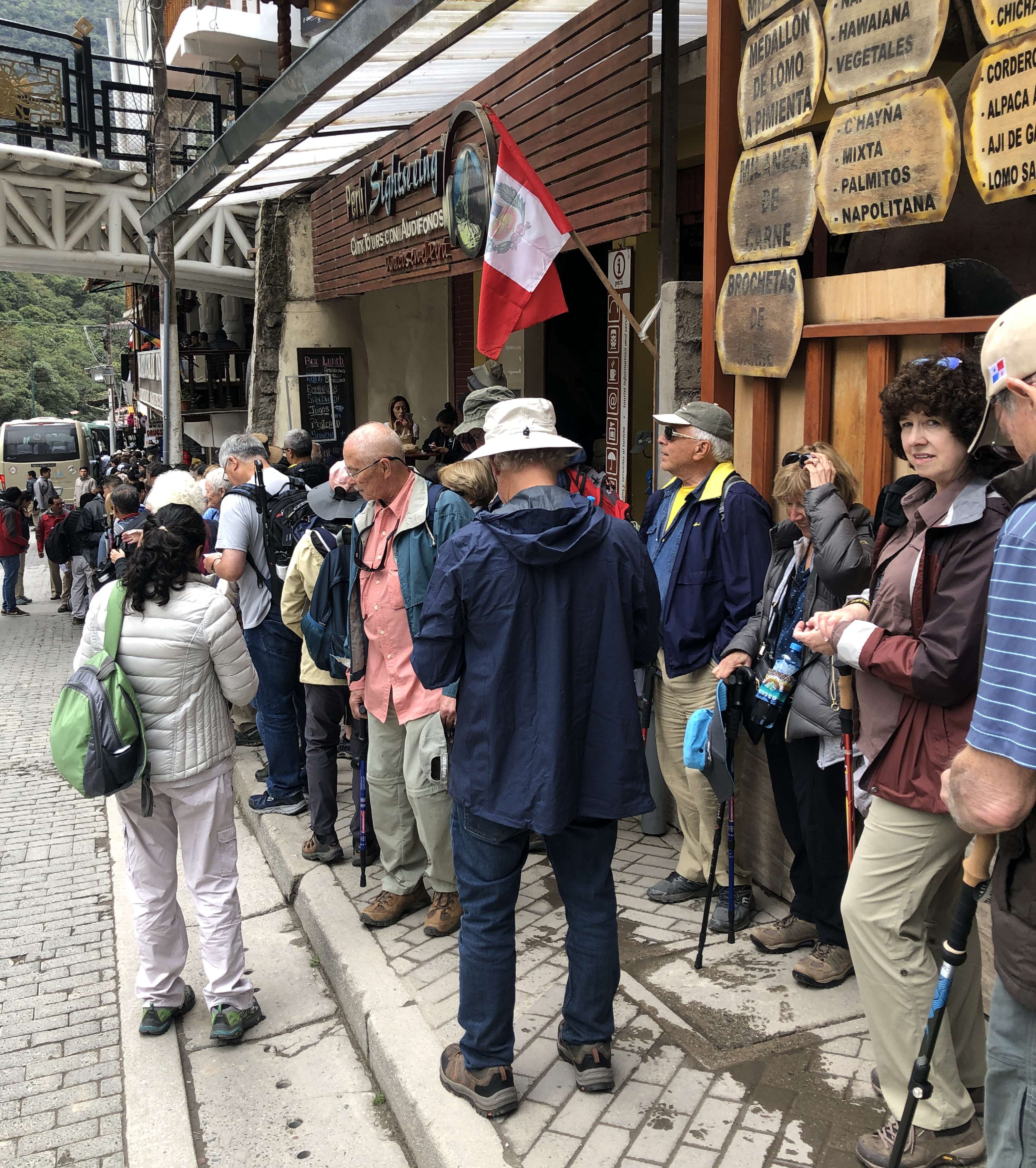
We enter Machu Picchu (pronouced pik-chu).
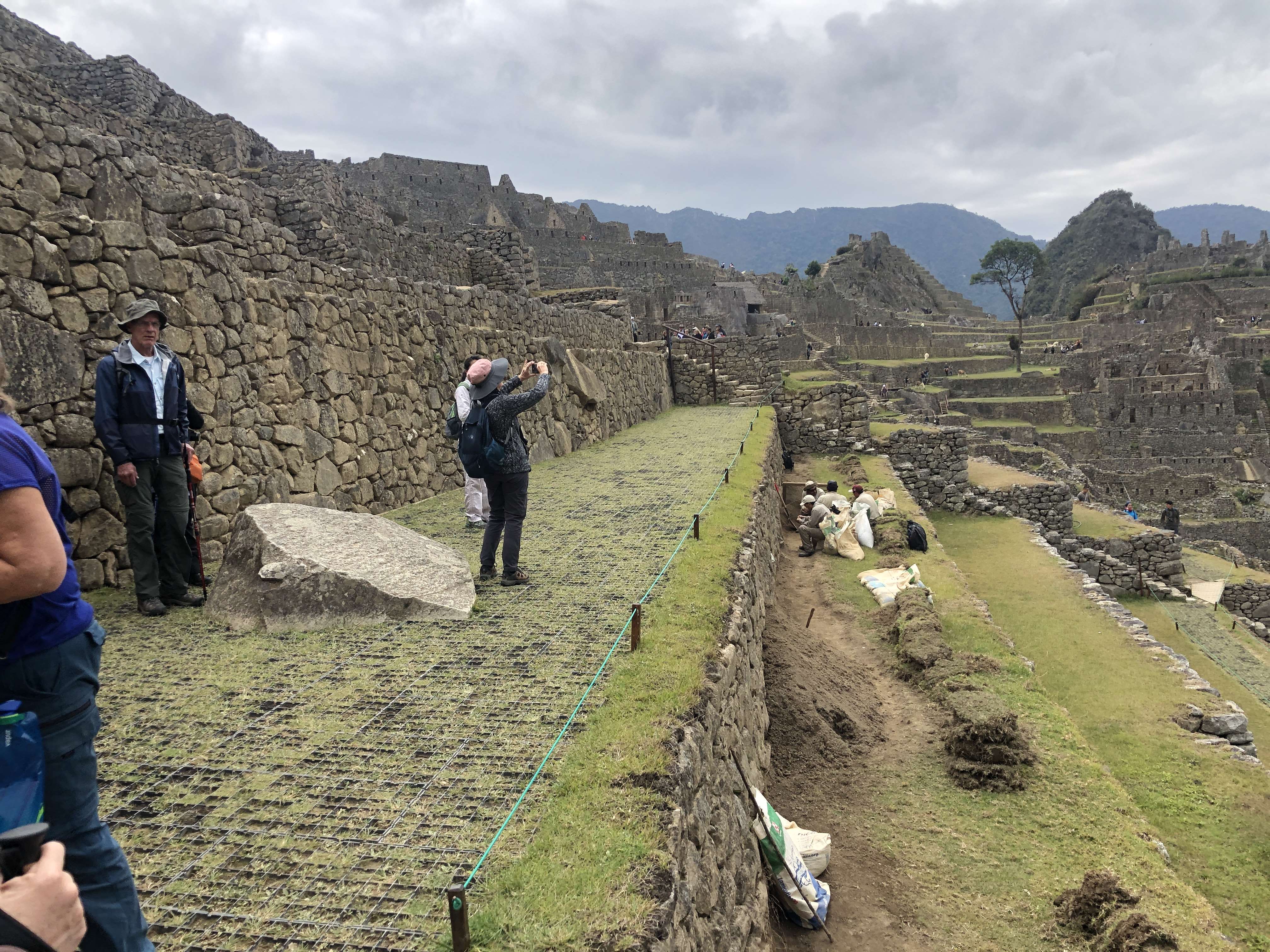
A LINK to more pictures of Machu Picchu. Translated from Quechua Machu Picchu is "old peak".
Tap the picture below.
After leaving Machu Picchu we took the train from Aquas Calientes to Ollantaytambo. This was turned into a fortress for one of the last stands by the Inca to the Spanish by Manco Inca Yupanqui.
Click on the picture below
